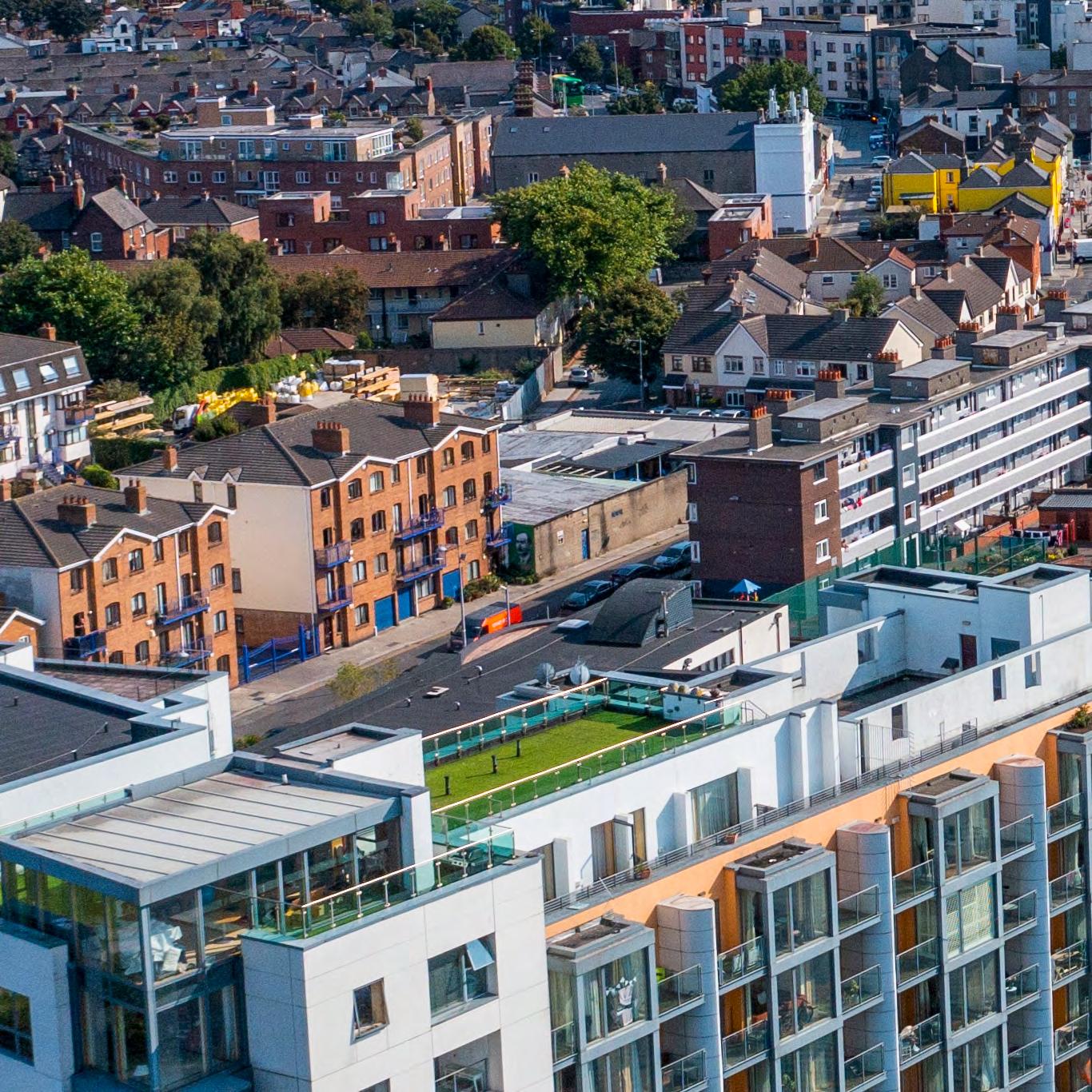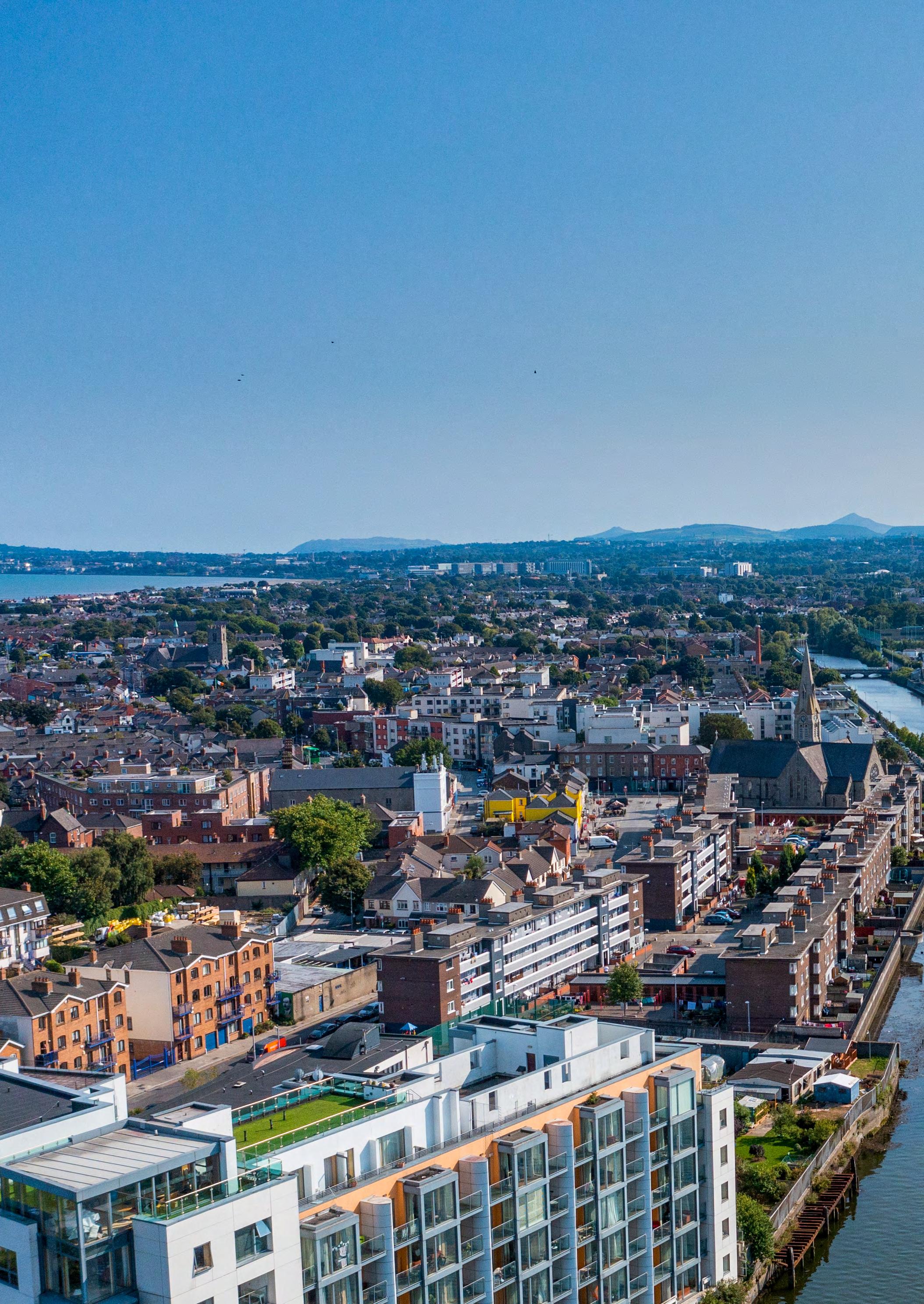Dublin City Destination AND Experience Development Plan













The Dublin City Destination and Experience Development Plan (Dublin City DEDP) is a five-year sustainable leisure tourism development plan for Dublin city. This plan has been developed through a programme of research and stakeholder consultation guided by the VICE framework i.e., exploring the possibilities for improving visitor experience, improving business viability, enhancing the lives of local communities and all in a way that protects our built and natural environment.
We are creating this plan at a critical time in the development of Dublin city as a world-renowned visitor destination. Cognizant of enhancing Dublin’s competitive position relative to its peers, sustainability measures (environmental, social, and economic) must become core pillars of the city’s tourism offer. Improvements and upgrades to attractions and public spaces are ongoing, and there are some exciting and transformational projects already in the pipeline. The DEDP seeks to capture these projects within one plan and harness their potential impact over the next five years.
While the focus of this plan is on developing the city as a destination for visitors, we also recognise the importance of other contributing factors to making Dublin a great place to live for local residents. These factors include:
◊ Maximising potential of city’s parks, waterways and open spaces
◊ Improving cleanliness and overall appearance of Dublin
◊ Addressing concerns around safety by day and night
◊ Prioritising mobility, accessibility and navigability
◊ Supporting and celebrating Dublin’s cultural vibrancy
◊ Empowering citywide place activation
We acknowledge the ongoing role of partners in driving forward this vital work.
A wide variety of local and national partners have a stake in making Dublin an attractive, compelling and sustainable place to live in and to visit. This plan includes initiatives that will be driven directly by Fáilte Ireland as well as those in which partner organisations are taking the lead, reflecting their own mandate and expertise, with Fáilte Ireland providing support through, for example, advocacy, knowledge building and/or tourism sector engagement. The successful delivery of this plan will require sustained collaboration with key public and private sector partners over the lifetime of the plan.
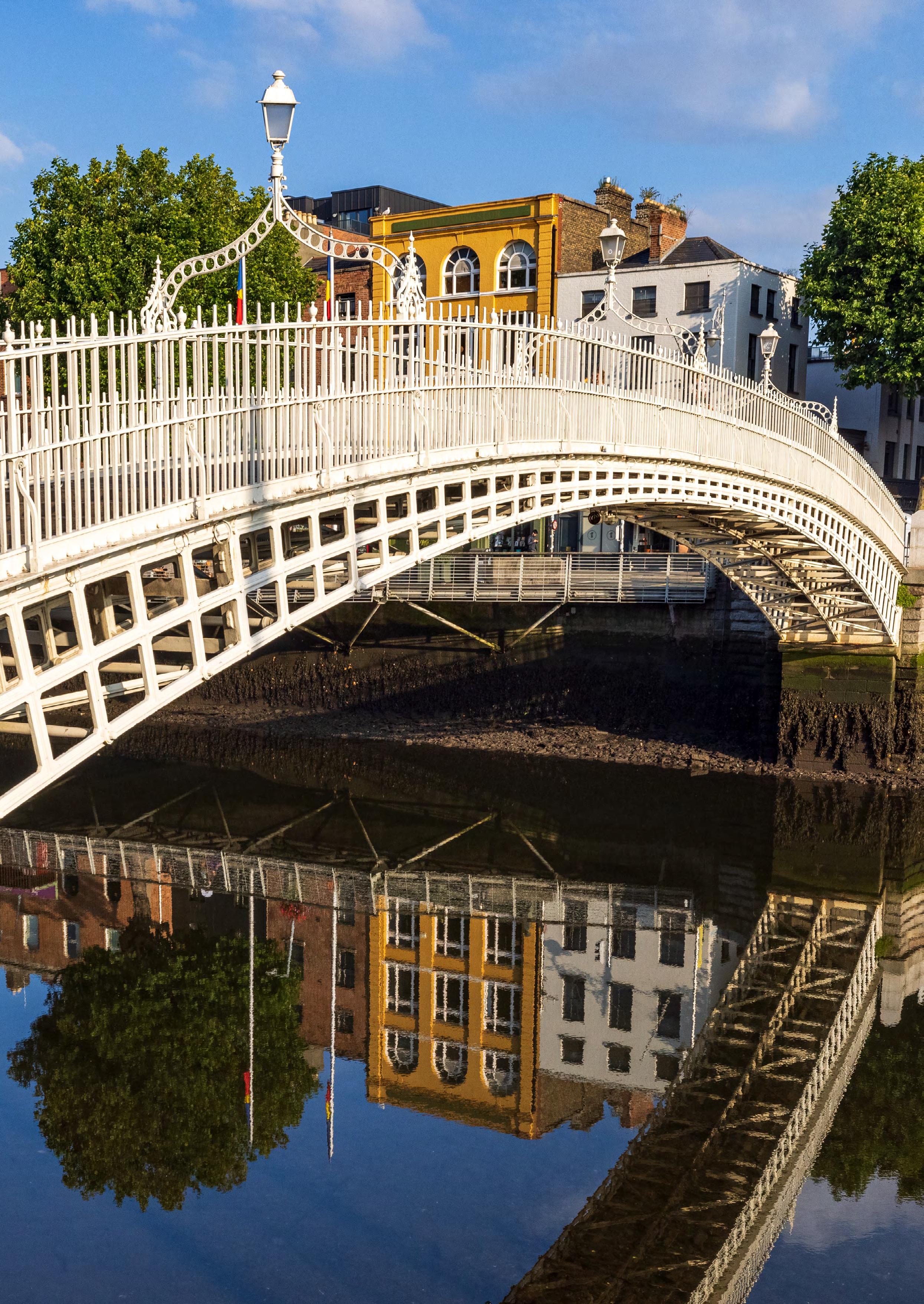
Dublin, the vibrant capital of Ireland, is a must-visit destination for travellers seeking a blend of rich history, culture, and heritage, coupled with a welcoming modern-day personality full of energy, creativity and enterprise.
Dublin boasts three prestigious designations:
1. UNESCO City of Literature: Since 2010, Dublin has been recognized for its rich literary heritage, including four Nobel Prize winners: W.B. Yeats, Samuel Beckett, George Bernard Shaw, and Seamus Heaney. The city hosts numerous literary festivals and events, fostering a vibrant community of writers and readers.
2. Dublin Bay Biosphere: Covering over 300 km², this UNESCO biosphere includes diverse habitats like estuaries, marshes, and islands. It highlights the unique juxtaposition between urban life and natural beauty, enhancing Dublin’s appeal to visitors.
3. EU Mission City: Dublin is part of the EU Mission for 100 climate-neutral and smart cities by 2030, promoting sustainability through clean mobility, energy efficiency, and green urban planning.
In the coming years, tourism revenue in Ireland is forecast to grow at 5.6% per annum*. This presents significant opportunities in terms of supporting employment and direct and indirect economic growth across the city - but it also highlights a shared need to ensure that tourism is managed more effectively to mitigate any negative impacts that growth may bring.
DUBLIN’S ECONOMY - KEY FIGURES:
2.1m
42%
€27,686
950,000 EMPLOYMENT
Source: Dublin Chamber
*Source: Tourism Policy Framework 2025-2030, Department of Tourism, Culture, Arts, Gaeltacht, Sport and Media
Fáilte Ireland’s work is guided by the VICE framework, which means exploring the possibilities for improving visitor experience, improving business viability, enhancing the lives of local communities and doing this in a way that protects our built and natural environment. Some key indicators that relate to this framework include:
In 2023 Dublin saw:
▶ 3.9 million international tourists and 2.4 million domestic tourists
▶ €2.3 billion in international revenues and €490 million in domestic revenues
▶ €591 spend per capita among international tourists, and €203 among domestic tourists
▶ International visitors staying av. 5.6 nights and domestic visitors 1.9 nights
According to the most recent visitor tracker (Nov 2024 Summer Consumer Update), the Dublin region accounted for 14% of all domestic trips among ROI residents with concerts accounting for 1 in 4 visits. Overall visitor satisfaction is high at 84% (source: Fáilte Ireland Destination Attitudes Survey, 2024)
The top international source markets for Dublin are Great Britain, the United States, France and Germany (in this order).
Dublin continues to have the largest proportion of museums/galleries of any of Ireland’s regional experience brand (33% of attractions).
The city’s most visited attractions in 2023 included Phoenix Park Visitor Centre (1.9m visitors), the Guinness Storehouse (1.46m,) Dublin Zoo (1.16m) and the National Gallery of Ireland (1.1m).
(Source: Fáilte Ireland Visitor Attractions survey 2023).
The Tourism Approval Rating (TAR) is calculated for both international and domestic tourism using a combination of tourism perception scores. The TAR is plotted on a sixsection scale (Advocacy, Approval, Acceptance, Limited Acceptance, Threatened Acceptance and Disapproval) to highlight residents’ perceptions of domestic and international tourism in their county on an ongoing basis. Dublin’s Tourism Approval Rating is 57, indicating residents are accepting of tourism.
Dublin ranks 29th place in the top 40 of the Global Destination Sustainability Movement Index scoring 75.69% (Gothenburg, in 1st place scores 92.43%). (Source: GDS-Index).
Through the development of this DEDP, we have been mindful that the tourism activity, and successes, outlined above are happening within a bustling metropolitan city.
The boundary of this DEDP is either home or place of work for almost 600,000 people (CSO data 2022), which like other comparable cities across Europe, creates challenges related to urban growth, inequality and sustainable, inclusive development. Industry stakeholders have specifically highlighted concerns in Dublin around policing and public order, visitor safety and cleanliness, particularly in the city centre and key tourist areas. There is broad consensus amongst the city’s visitor economy sector that without some of these fundamental challenges being addressed at a city level, the impact of future investment and development in Dublin’s destination experiences may not achieve the desired impact - and this will also be noticed by visitors.
Recognised as the foundations upon which this DEDP will be built, these citywide challenges have also been highlighted in the Taoiseach’s Task Force report on Dublin City Centre, launched in October 2024, with 10 Big Moves identified to action positive change in the city, signifying their importance to the strategic development and management of Dublin in the future. Delivery of this Taoiseach’s Task Force report has also been included in the Programme for Government 2025.
When considering experience development, these city development priorities must also be combined with other strategic citywide enhancements for Dublin such as ease of transport (aligned to Dublin City Centre Transport Plan, 2023) and navigability for visitors (Dublin Visitor Orientation Strategy Review, 2024) the quality of the public realm, the level of place activations (for locals and visitors to come together) and the vibrancy of the city’s cultural scene (Dublin City Night-Time Economy Strategy, 2024) particularly important to help diversify Dublin’s appeal to national and international audiences.
Addressing these citywide fundamentals and place enhancement priorities will require a collaborative, multi-stakeholder approach, including active engagement from those within the visitor economy. Industry stakeholders are committed to working alongside local and regional authorities to ensure these challenges are prioritised and addressed in the future. Ultimately, through the delivery of the actions outlined in the Taoiseach’s Task Force report and other citywide strategies, combined with positive momentum, energy and collaboration across the public, private and community sectors, we can ensure the conditions are set for Dublin to continue offering world-class visitor experiences and to maximise the city’s full tourism potential.
This plan has been developed in line with the objectives of and key performance indicators for the Dublin Regional Tourism Development Strategy 2023-2027 (RTDS), which looks at the region’s three distinct geographies (city centre, coast, and mountains) holistically. The RTDS provides a strategic framework to guide other, more detailed tourism development plans, which will be prepared over the next five years. These include Destination and Experience Development Plans, as well as the tourism sections of City and County Development Plans and other sources of public funding. The four objectives contained within the Dublin RTDS are to:
1. Increase resilience by optimizing visitor mix and maximizing revenue by increasing dwell time and the range of activities engaged in.
2. Re-ignite business tourism, positioning Dublin as a leader internationally with a focus on sustainability.
3. Develop differentiating experiences, providing domestic and international tourists with reasons to stay longer.
4. Build a committed stakeholder and industry partnership to develop Destination Dublin, encompassing the whole region and leveraging citizen-centric and visitor-centric initiatives for mutual benefit while reducing the industry’s carbon footprint and ensuring net contribution to the protection of our cultural and natural heritage.
Strategic objectives 1, 3, and 4 form the basis of the overall destination development approach within this DEDP. We will also ensure alignment between the actions under this DEDP and the recently published Business Events Strategy.
The priorities and actions outlined in this DEDP will be delivered in close partnership and collaboration with Dublin City Council. In their Dublin City Development Plan 2022-28, Dublin City Council sets out the vision that “within the next 10 years, Dublin will have an established international reputation as one of Europe’s most sustainable, dynamic and resourceful city regions”. Furthermore, the Dublin City Local Economic and Community Plan 2024 - 2029 seeks to balance the needs of people, the economy, place and the environment, and highlights the importance of strategic partnership working, such as this DEDP collaboration, to deliver sustainable tourism for Dublin in the future.
Dublin City Council’s Tourism Strategy 2023-28 provides more specific detail of three strategic tourism goals for the city: 1) To serve a people-centred and community-based growth agenda, 2) To be proactive, accountable and measurable toward the city’s shared climate goals, and 3) To be innovative, future-facing, creative, collaborative and digitally-advanced. This DEDP aligns with these shared goals and priorities for Dublin with the actions outlined establishing and supporting wider city ambitions to ensure we maximise our collective impact.
The objective of a Destination and Experience Development Plan is to unlock the tourism development potential of an area. It aims to ensure that any development contributes positively to the visitor experience, industry performance, local community, and the environment, through a collaborative process and by promoting sustainable best practice. A DEDP is built through a collaborative process around a roadmap of catalyst projects and industry development initiatives, aligned under strategic objectives and united by an agreed common vision.
Sitting under the objectives of the Regional Tourism Development Strategy, this plan includes:
◊ A 10-year, shared destination vision that focuses on what differentiates Dublin from other destinations, and that builds towards the wider regional vision.
◊ Five-year objectives, which take account of destination maturity, visitor strategy, sustainability, and consumer research.
◊ Catalyst projects are agreed priority projects, implemented over the course of the 5-year DEDP delivery period. They will make a transformational improvement to the visitor experience, for example through:
ʰ A wider choice of things to see and do while in the city
ʰ Expansion of spaces or improvement to facilities at visitor attractions
Improvements to the public realm that will enhance the experience for visitors
◊ Supporting initiatives include projects such as research, strategies, training programmes and collaborative networks. They are intended to build knowledge, develop plans and drive all-round improvements to visitor mobility and exploration, while supporting a thriving, skilled tourism sector in the city.
◊ Measurement & KPIs – balanced set of SMART measures linking to the Fáilte Ireland and EarthCheck sustainability indicators.
In the coming years, tourism revenue in Dublin is forecast to grow at 5.6% per annum*. This presents significant opportunities in terms of supporting employment and direct and indirect economic growth across the city - but it also highlights a shared need to ensure that tourism is managed more effectively to mitigate any negative impacts that growth may bring.
*Source: Tourism Policy Framework 2025-2030, Department of Tourism, Culture, Arts, Gaeltacht, Sport and Media
This DEDP was developed through an extensive process of research and analysis which engaged public and private stakeholders from across the city. Aligned with the process followed for other DEDPs across the country, it included a wide-ranging product audit based on Fáilte Ireland’s Product Development Framework, area reviews, mystery shopper visits, interviews with travel trade specialists and a distribution audit to examine saleable experiences across the city. Key policy documents, as well as trends in international urban tourism management were examined, together with an analysis of case studies from Dublin’s peers around the world. All of this research helped to highlight opportunities for Dublin, together with the results of surveys of past and prospective visitors from three key inbound markets (US, UK and France).
Findings from this research were reviewed and debated throughout this process through interviews and workshops carried out with key decision makers and more than 100 industry representatives, while a specially constituted Working Group reviewed and steered the DEDP’s development through periodic meetings. Fáilte Ireland would like to extend its sincere thanks to all those who contributed their time and expertise to this process.
The development of this Dublin City DEDP has coincided with the conclusion of the Dublin Docklands DEDP (2020-2024). Various actions and corresponding workstreams that were ongoing in the Docklands at the time of publication have been integrated into this DEDP.
Findings from the research carried out for this DEDP identified a range of opportunities and challenges, which are summarised here:
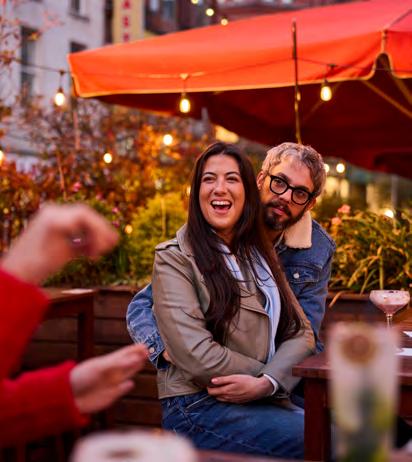
Vibrancy of the city is key to Dublin’s appeal; however, the current offer is not being sufficiently leveraged: We are currently not making enough of what makes Dublin unique and what differentiates us. There is an opportunity to refresh Dublin’s image as a city with an active evening economy as well as more multi-use cultural spaces like markets and late-opening visitor attractions.


How our products, experiences and accommodation are perceived:
Dublin has a strong existing product set but among potential visitors there is general low awareness of the breadth of the offering and a persistently outdated image of what Dublin has to offer. Some product is seen as dated and enhancement is required, alongside a wider range of choice of accommodation types for visitors.
Making the most of Dublin’s outdoors: Dublin has an impressive range of outdoor spaces including parks and waterways, but they are not utilised or animated as well as they could be. There are also issues with perception of cleanliness and safety in parts of the city where visitors spend time.

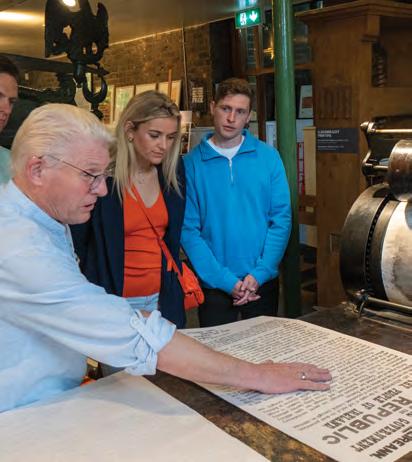

Exploring the city with confidence: For visitors who are unfamiliar with the city, Dublin can sometimes seem quite complex and difficult to navigate. For visitors in central districts, it’s often unclear what attractions lie beyond the centre, or why they should take time to explore.
Helping Dubliners to play a leading role in delivering and enjoying tourism experiences: Dubliners have an international reputation for friendliness, and visitors are keen to discover this in person. It will be important to explore more ways in which Dubliners can meet visitors and share their stories, as an integral part of the visitor experience (for example at events, attractions, or during tours), with the added benefit of giving Dubliners more of a chance to benefit from the economic impact of tourism.
Improving the sustainability of tourism in Dublin across the board:
As a key pillar of Dublin’s economy, it is essential that tourism plays its part in making Dublin a more sustainable place to live, work, invest in and visit.
Ensuring that we match what we offer with the interests and motivations of visitors in our core markets (both domestic and international) will place us in the best position to delight our visitors, keep them in the city for longer and persuade them to return in the future.
Fáilte Ireland’s consumer research indicates that the following motivations from the Travel Motivations Framework are strongest for visiting Dublin:
Among domestic visitors:
1. Social Energy is the most popular motivation for Dublin, with consumers enjoying the vibrancy and energy of the area, taking in the surroundings, and feeling the energy that comes from being around other people. In this context, enjoying nightlife, festivals and events are key activities for consumers.
2. Adventure is another key motivation, through the availability of a range of outdoor activities such as walking and cycling.
3. Time out is also present as a motivation for all age groups, particularly for couples. This is met through activities such as cultural attractions, shopping or spa trips.
Please see more information here
Among international visitors:
Tourism Ireland has identified ‘Enrichment Explorers’ as an important segment that is also relevant to Dublin. Drawn to lesser-known destinations and meaningful experiences, Enrichment Explorers seek genuine encounters with welcoming locals and to satisfy their curiosity for learning. They embrace their natural surroundings, venturing into unexplored nature trails, immersing themselves in local art, culture and cuisine and discovering historical landmarks.
Please see more information here.
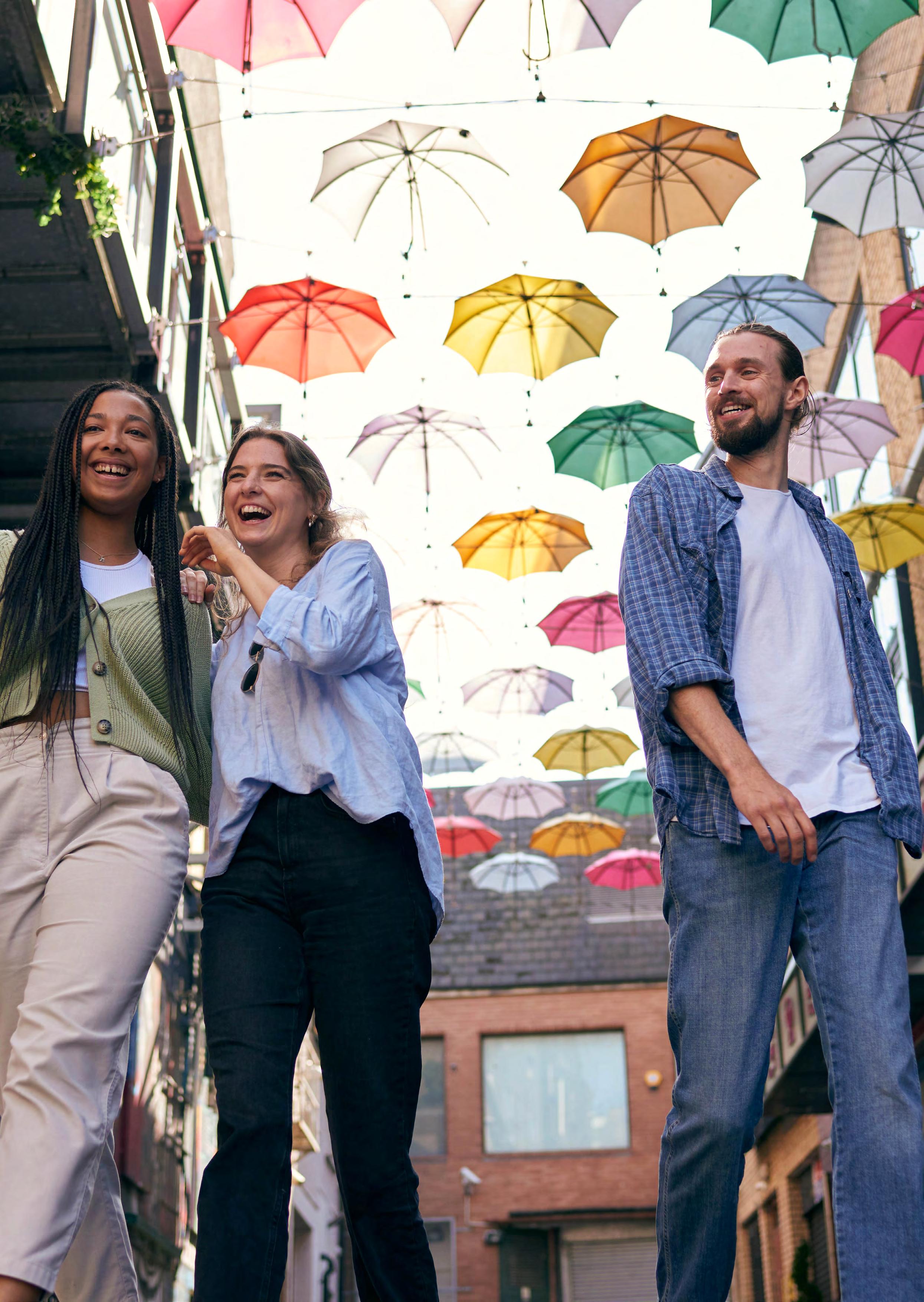

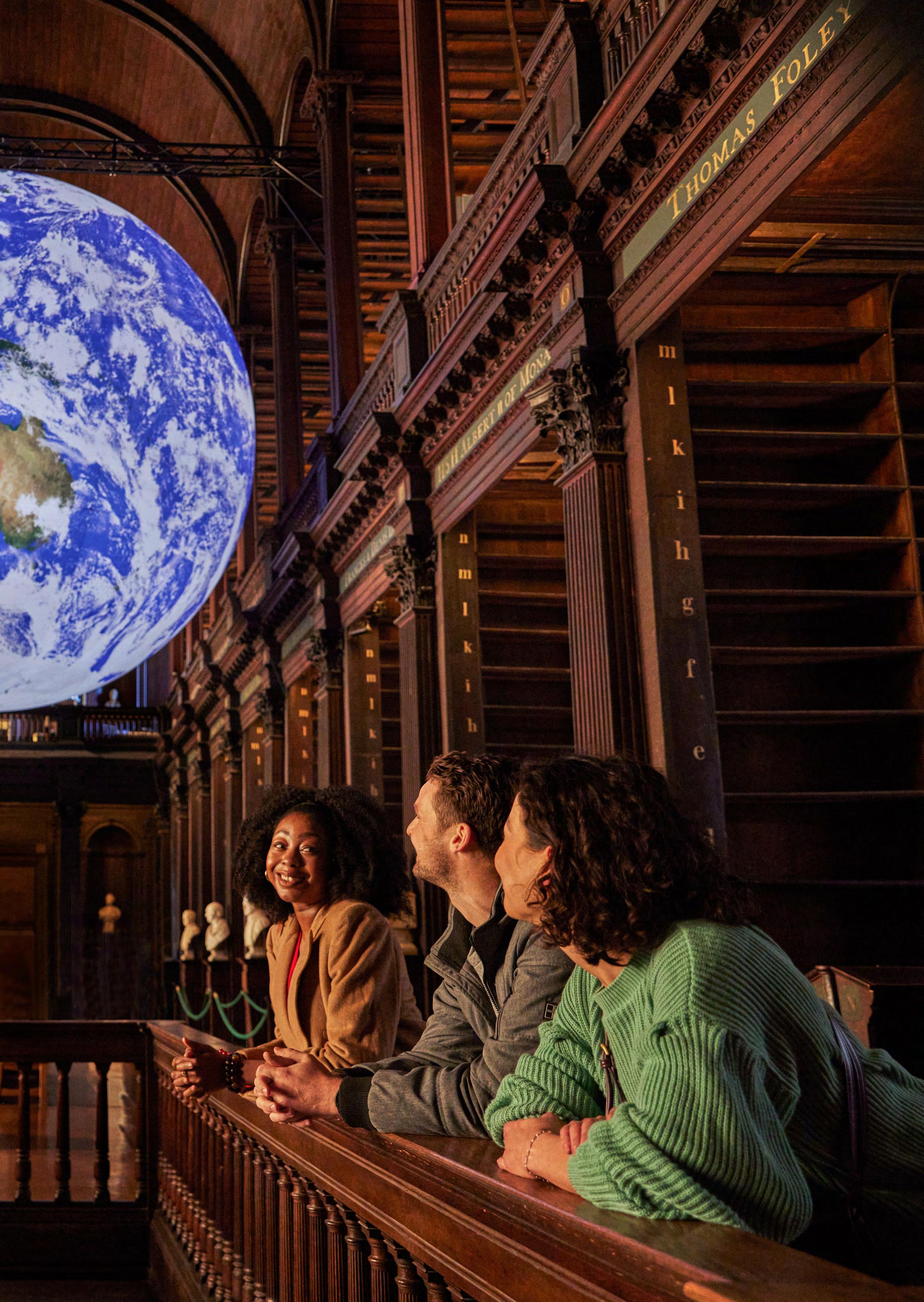
OUR VISION FOR THIS DEDP IS THAT BY 2030:
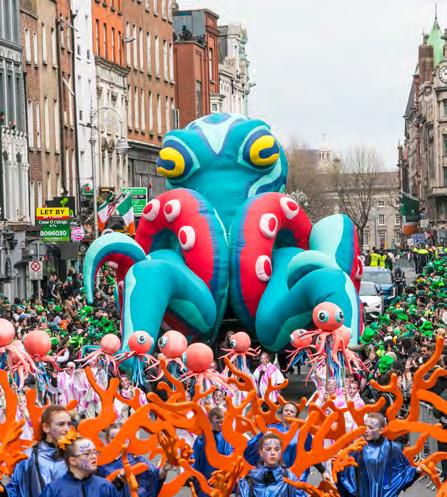
Dublin is a must-visit destination that draws both first time and repeat visitors, based on a strong mix of events and attractions for every season.
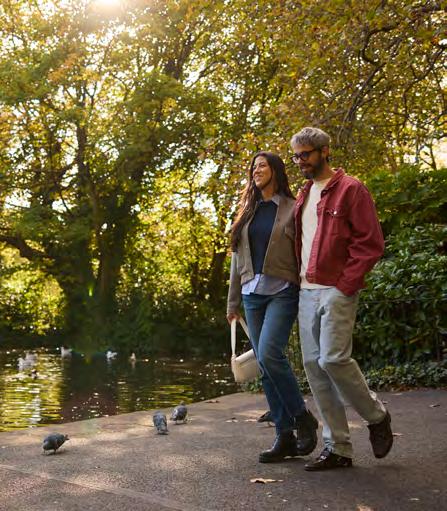
Dublin is easily and seamlessly navigable for visitors on foot, by bike or on public transport, which encourages visitors to explore the city with more confidence, while reducing their impact on the environment.
Visitors and Dubliners enjoy a wider range of indoor and outdoor spaces across the whole city, with these spaces appealing to visitors and residents alike, and facilitating interactions that contribute to Dublin’s reputation as a friendly city.

Dublin’s visitor attractions consistently work together and innovate, to ensure that visitors can get the most immersive, enriching experiences, and consistently have compelling reasons to return.
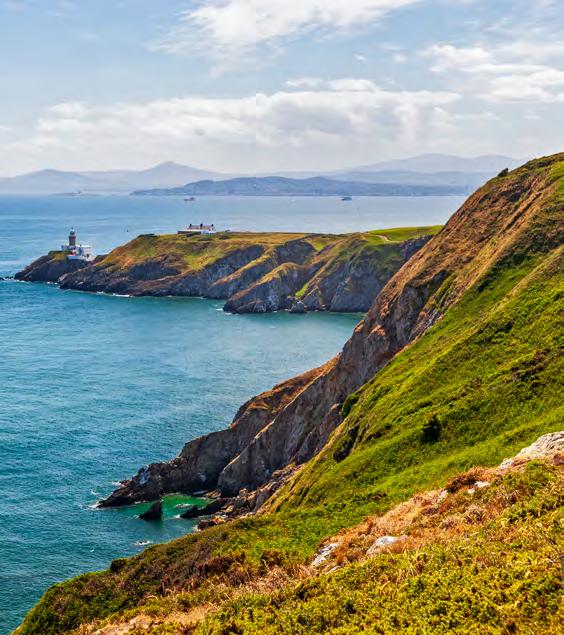

Dublin’s tourism sector is taking concerted climate action, achieving greater community impact and helping visitors to make responsible choices.
Dublin’s approach to positioning the city as an outstanding place to visit is based on a collaborative and consistent approach, with active participation from all interested parties.

Six strategic objectives, with a corresponding list of time-bound, stakeholder-assigned, actions will support us in achieving the vision for the Dublin City DEDP, leveraging Dublin’s unique opportunities, and addressing its challenges:
Focus on what differentiates Dublin - friendly locals, culture, art, musicto ensure that visitors experience the vibrancy of the city through a wide range of events and visitor experiences available throughout the day, and at quieter times of the year.
Focus on raising the bar for the existing offering, improving interpretation to deliver best-in-class experiences while supporting the development of new products that meet our goals, and building on the pipeline of accommodation stock.
Augment our outdoor offering, leveraging our natural and built outdoor spaces, focusing on desired footfall areas and improving animation in visitor pathways.
Manage visitor flow and connect the dots through visitor-friendly public transport, cycle and walking routes to ensure that visitors can explore the city with confidence, and with minimal environmental impact.
Encourage Dubliners to explore their own city year-round to spread the economic benefit of local tourism, creating a local buzz in more neighbourhoods, nurturing Dubliners' pride in the city and helping them to become the city's best ambassadors.
Ensure that tourism in Dublin is developed and managed in a responsible way by growing average length of stay, encouraging active travel, and through implementation of the Climate Action Programme.


04 05 06
Make Dublin a Seamless City for Visitors
Catalyst Projects
Supporting Initiatives
Involve Dubliners
Catalyst Projects
Supporting Initiatives
Support a More Sustainable City
Catalyst Projects
Supporting Initiatives
Transport Place Activation Safety Cleanliness


The implementation of the Dublin City DEDP is based on the commitment of stakeholders to project delivery and is structured around an action plan approach. Key stakeholders will assume responsibility or collaborate in the execution of the essential tasks required for the implementation of the Dublin City DEDP. An implementation group will be established to oversee the delivery of the plan.
Key: Timelines and partners
For the purposes of this DEDP:
Short-term (ST) refers to the financial year 2025-2026
Medium-term (MT) refers to the financial years 2026-2028
Long-term (LT) refers to the financial years 2028-2030
The following acronyms are used in the project summary tables:
DCC Dublin City Council
DLR Dún Laoghaire-Rathdown County Council
DPC Dublin Port Company
DT Dublin Town
FI Fáilte Ireland

This DEDP has been developed to cover the full five-year period from 2025 to 2030. The following pages contain action plan tables which include references to the shortterm (ST), medium-term (MT) and long-term (LT) time scales. These timescales will be reviewed periodically and confirmed with delivery partners to ensure that they are accurate and achievable.
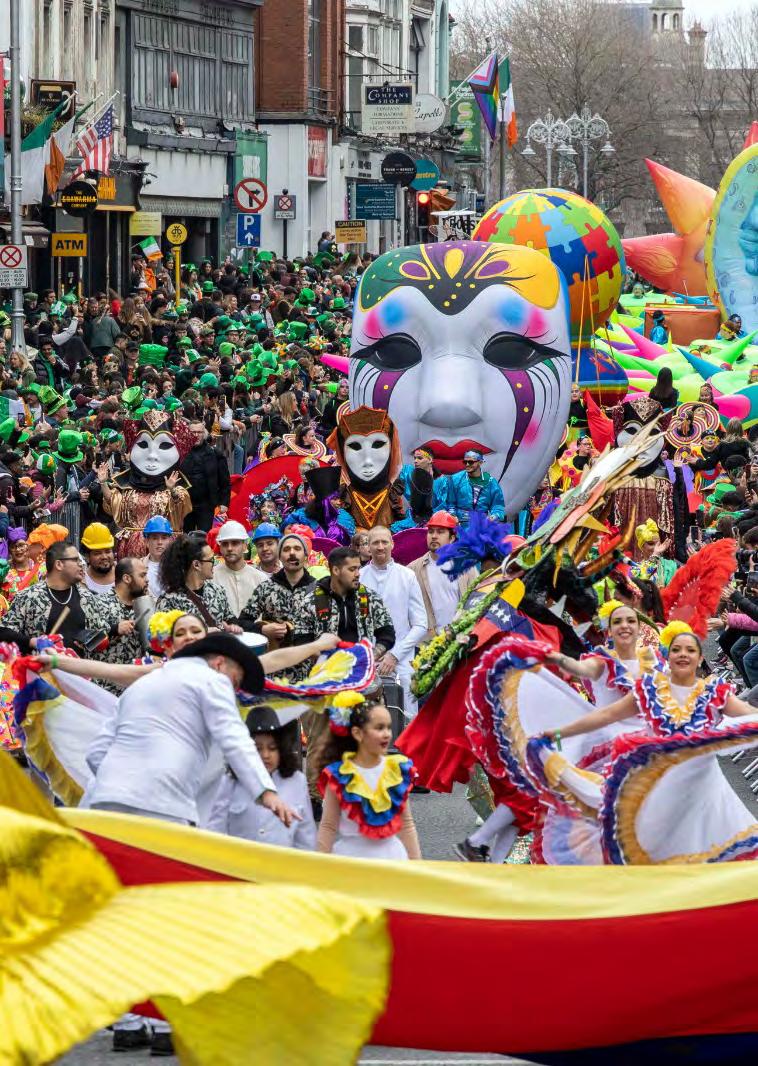
Celebrating and harnessing the energy of the city and its people are key to differentiating Dublin, after all, appreciating a city as varied and lively as Dublin can’t be done by visiting just a few postcard attractions alone; friendly locals, markets, festivals, culture, and art all contribute to ensure that visitors experience the vibrancy of the city whenever they come.
Research conducted for this DEDP found that perceptions of what Dublin offers have changed little in the minds of consumers and the travel trade, while its international competitors were perceived by some to offer a fresher, more modern proposition in the minds of potential visitors. Yet in reality, Dublin’s cultural programme, its architecture and the stories of Dubliners have evolved hugely in recent decades, offering new reasons for a diverse range of domestic and international visitors to come and experience it for themselves. Research also revealed that visitors often have little idea about what Dublin offers beyond well-trodden city centre streets.
Therefore, bustling markets, engaging events and neighbourhood exploration can all help to expand visitors’ perceptions of what Dublin offers, and give them many reasons to return. For this reason, it is important that some of Dublin’s key outdoor locations are well prepared with the necessary infrastructure to be able to host events and festivals and other outdoor place activations.
Several projects are in the pipeline for the city that will enhance the city’s cultural infrastructure, including the Parnell Square cultural quarter, the redevelopment of the Abbey Theatre and National Concert Hall, and the provision of entertainment and performance spaces within the city’s private developments.
Key to communicating this vibrancy is that Dublin’s approach to branding and positioning the city as an outstanding place to visit is based on a collaborative and consistent approach, with active participation from all interested parties.
Catalyst Project 1.1: Create and support thriving Dublin food markets.
Historically markets are places for people to gather, connect and trade, with many comparable European cities also boasting thriving markets. While Dublin currently has several weekly markets such as Moore Street and the Temple Bar Food Market, there is no permanent indoor food market in Dublin City Centre. Introducing a permanent food market space will contribute to the vibrancy of the offer, help to reinforce a sense of place in the city, and provide an opportunity for residents and visitors to meet and connect. There are at least three markets currently under development in Dublin City:
CHQ food hall and market: The plan is to convert the ground floor of the CHQ building into a multistall food market, which will offer the visitor approximately 20 different market stalls, showcasing the best of what Dublin has to offer and catering to FIT visitors, groups, and the corporate market. This market will function as an anchor in the Docklands, creating footfall and bringing this key neighbourhood to life, while showcasing the best of Irish food.
Fruit and Vegetable Market: Dublin City Council has started the €26m redevelopment of Dublin’s Victorian Fruit and Vegetable Market in Dublin 7, the 127-year-old red brick building, located on Mary’s Lane, between Capel Street and Smithfield. The market’s offerings will reflect the business and restaurant offerings as part of a modern Ireland in the city and will add to the evening economy in the area, with a scheduled reopening for the end of 2027.
Iveagh Market: DCC is set to undertake stabilisation works in 2025 to conserve the existing fabric of the building, with €9m funding announced under the Urban Regeneration and Development Fund in September 2023. It is not anticipated that this building will come into use during the lifespan of the
City DEDP. However, once reopened this market will augment the city’s overall offer. Ensuring that these markets are sufficiently diversified will be vital to their success in contributing to the vibrancy of the visitor offer.
Successful outcomes under the VICE Framework would include:
Visitor (Demand)
Industry (Supply)
Community
Environment
Motivating visitors to explore more of the city by visiting the markets and the areas around them; enabling visitors to discover an authentic aspect of daily life in Dublin and discovering more about food and drink from Dublin and beyond.
Increased opportunities to develop and diversify saleable products (e.g. tours, tasting sessions, workshops); increased collaboration across different sectors (e.g. retail, F&B, tour operators), and; a boost to hospitality businesses surrounding market sites.
Local residents are able to benefit from improved market sites and public spaces closer to home and work that support community cohesion and pride of place, and a wider range of F&B products available to local consumers.
Increased opportunities for the sale of fresh, healthy and organic food & drink; increased opportunities for the sale of locally sourced food & drink with fewer kilometres from place of origin; food and drink on sale to local people within walking/cycling distance from home; integrate sustainable food production and waste practices into the offer for visitors.
Catalyst Project 1.2: Establish new low and shoulder season festivals and events.
Festivals and events are a key tool for growing visitor numbers during the off-season and in less busy areas of the city. Large-scale events including concerts, the Aer Lingus College Football Classic, and the NFL Dublin Game, are key drivers of footfall into the city. When successfully leveraged, festivals and events bolster local culture and support the development of audiences while also creating vibrancy that contributes to a strong sense of place.
Building on the continued success of the ‘Winter in Dublin’ programme we will explore the feasibility of developing a new quarter one (January - March) festival for the city that will complement and add to the existing offer. We will additionally seek to support the development of events that extend the visitor season, particularly in January, February, and October.
Successful outcomes under the VICE Framework would include:
Visitor (Demand)
Industry (Supply)
Encouraging visitors to explore more of the city by attending festivals and events in the city in the off seasons; continued success and growth of the Winter in Dublin programme.
Annual growth of festival and event programming generating shoulder season business; growth in hospitality businesses surrounding festivals and events.
Community Create opportunities to integrate local community stories into festival and event programming for the preservation of local culture.
Environment Promote and develop new shoulder season cultural and community experiences which do not put a strain on infrastructure or the local environment.
Many of the city’s attractions lie beyond the city core, and the more visitors and locals explore beyond the centre of Dublin, the more we can ensure that they discover a truly vibrant city. To discover Dublin’s neighbourhoods is to get to know its diverse people and to uncover the many layers of the city’s history. A new Dublin neighbourhood strategy will identify neighbourhood hubs, work with local businesses and resident groups, enhance accessibility, reinforce local identify, and identify opportunities for supporting infrastructure with a view to developing clearly differentiating neighbourhood propositions that help visitors unlock the unique stories of the city.
Successful outcomes under the VICE Framework would include:
Visitor (Demand)
Industry (Supply)
Enticing visitors to travel around distinct areas around the city and to get to know the locals and the city’s history.
Encouraging visitors to explore Dublin’s neighbourhoods beyond the city centre; foster opportunities to develop and diversify offerings such as tours and workshops, while promoting collaboration across sectors like retail, F&B, and tour operators.
Community Generate additional economic benefit through tourism activity across a broader range of city neighbourhoods by working with local businesses and resident groups.
Environment Reduce environmental pressure on the city’s busiest tourism zones; visitors are encouraged to explore neighbourhoods using active travel.
Building the value of tourism to Dublin means expanding and enhancing the range of things to do in the city at night, as well as by day. A lively and varied night-time economy helps to support jobs and livelihoods across the city and boosts the city’s international reputation as a cultural hub. Beyond our famed nightlife predominantly focused on pubs and restaurants, research also highlighted visitors’ interest in doing more varied activities at night such as visiting museums, going to shows, events and night markets. With visitors seeking to get the most out of their time in the city, tours and activities early in the morning or late at night can also prove a successful way to expand our appeal and show our city attractions in a new light.
Successful outcomes under the VICE Framework would include:
Visitor (Demand)
Industry (Supply)
Community
Expanding the range of activities for visitors to do, enabling them to discover the city and its stories in a new light; making tours and activities accessible to visitors who arrive early in the morning or late at night, and less dependent on regular trading hours. Increasing the range of evening/night-time activities for those who drink low/no alcohol.
Increasing sales of tours and activities for longer by day and night; developing new tours and activities that make use of new locations and public spaces; enhancing Dublin’s reputation as a thriving city to visit year-round.
Expanding the range of cultural and entertainment options for local residents to enjoy; increased opportunities for Dubliners to contribute to delivering the visitor experience; contributing to a safe, thriving and liveable city (centre) for residents.
Environment Including tours and activities with low environmental impact (that maximise walking and cycling) and ensuring that all activities meet relevant local environmental standards (including noise).

1.1.1 CHQ Food Market: Develop, launch, and promote the CHQ Food Market and further events as required to drive visitors to the area.
1.1.2 Iveagh Market: Seek to stabilise, progressively restore and develop the Iveagh markets as a functioning market.
1.1.3 Fruit and Vegetable Market: Conserve and activate the Fruit and Vegetable market.
1.1.4 Identify opportunities to support entities managing key city centre markets, for example business planning, concept development, and behind-the-scenes saleable experience development.
1.2 Establish new low and shoulder season festivals and events
1.2.1 Complete an audit of the existing festival programme in the city to identify opportunities to programme new festivals and events to targeted markets, at targeted times of year.
1.2.2 Expand upon the existing programme of shoulder-season and winter festivals and events including the New Year’s Festival and TradFest by exploring the feasibility of a new festival for Q1.
1.2.3 Seek to extend the visitor season through support for new events in February and October.
1.2.4 Explore the opportunity to establish Dublin’s cultural credentials as an asset, including a review of music as a potential differentiator for tourism.
1.2.5 Support the creation of a city-wide festivals & events forum thereby facilitating the identification of gaps and opportunities throughout the year, and also the opportunity for co-promotion of key events to drive footfall into the city.
1.2.6 Maintain a large events calendar to give a macro view of event activity so that large-scale events are not contributing to capacity pinch points at key times during the year.
1.3.1 Collaborate on a Dublin neighbourhoods development strategy that draws on international best practice.
1.3.2 Identify a range of compelling neighbourhood hubs (for example key museums and attractions which will provide a draw, supported by a sufficient offer of shops, F&B, and appealing outdoor spaces such as parks).
1.3.3 Engage with attractions, small businesses, residents’ groups to evaluate and assess how to develop a greater tourism appeal based on the neighbourhood’s unique identity.
Ongoing
1.3.4 Develop a neighbourhoods marketing strategy to ensure accurate positioning that reflects residents own ambitions and community identity.
1.3.5 Provide supporting infrastructure to aid visitor exploration (wayfinding, local visitor information guides).
1.3.6 Identify any potential gaps in the type/ number of experiences in the neighbourhood strategy and what supports are required to address these
1.4.1 Continue to implement programme to increase the breadth of the night-time offering.
1.4.2 Audit early morning and late-night tour and activity offer with key attractions and identify opportunities for expanding opening hours and explore late night opening options (including special events) with NCIs.
1.4.3 Work together to support the growth of night-time economy initiatives, including night markets, which bolster cultural dynamism, foster economic growth, and enhance safety and security in the city.
1.5 Coordinate the delivery of key recommendations outlined in the 2024 Dublin Food Tourism Audit.
1.6 Work with event organisers to explore how a visitor component could be integrated into event programming (e.g., before or after shows, or behind the scenes).
1.7 Develop a cultural proposition for tourism that taps into what is uniquely Dublin, while also being informed by international best practice, and to produce an action plan that optimises this unique cultural proposition and leverages Dublin’s cultural assets.

Dublin City has a rich array of experiences to offer the visitor. As would be expected in any capital city there are several iconic/ large scale visitor attractions, which feature regularly in national and international marketing initiatives and media coverage (e.g. the Book of Kells at Trinity College, Guinness Storehouse, Dublin Castle etc) and which attract large visitor numbers annually. These are supplemented by world class cultural institutions, and a significant number of medium to small-scale visitor experiences which offer a rich and diverse tapestry of experiences and are essential to the vibrancy of the city.
Dublin is among one of the strongest performing hotel markets in Europe and experienced exceptional growth in average daily rates and occupancy to 2019 when Dublin trended among the top three European markets throughout the year. This continued in 2022, post COVID-19, when Dublin recovered strongly to be ranked as Europe’s top performing market for occupancy (source). The Dublin tourism accommodation market, particularly hotels, fundamentally differs from that of the rest of the country due to the diversity in its demand profile i.e. corporate markets and events, however for the city to remain competitive, improvements are needed to city’s range and availability of accommodation.
There is a need to ensure that there is a diversity and range of visitor products within the city that appeal to the primary visitor segments for Dublin and that create reasons to stay longer and return, and that also ensure the vibrancy of the city is enhanced. A key part of the future development and investment in the sector (in particular from public sector sources) should seek to ensure that diversity and appeal are enhanced through any future initiatives.
The Product Development Framework analysis for Dublin City identified that there is a significant range and quality of existing visitor experiences within the city, therefore a priority of this plan is to support and enhance the existing visitor experience offer. In many of our key attractions across the city a significant number of attractions require interpretative upgrades and/ or solutions to unlock additional capacity. Many of the attractions in Dublin are large historic properties and/ or national monuments, and where reinvestments have been possible they tend to be to the fabric of the building itself, therefore future investment supports will be required for the ‘visitor experience’ elements of the offer in areas like visitor services, interpretation and storytelling, and linkages to the outdoors.
Within this objective there are four main catalyst projects for visitor attractions and experiences. These include:
• 2.1: Providing supports to existing and new visitor experiences looking to either expand or create visitor experiences.
• 2.2: Supporting increased choice and quality of visitor accommodation.
• 2.3: Leveraging state assets and lands for the benefit of the entire tourism sector.
• 2.4: Reimagining the Dubline.
Furthermore, as sustainability (environmental, social and economic) becomes increasingly important, both to consumers and in B2B relationships, Dublin’s experiences and attractions will increasingly need to demonstrate their commitment to meeting environmental standards, and in delivering a positive social and economic impact on surrounding local communities.
◊ Create an ‘advisory support’ package for visitor experiences to include insights into the market and types of experiences of appeal to visitors, and international benchmarking where possible.
◊ Support key visitor attractions which require significant interpretative and capacity enhancements to identify solutions and investment opportunities.
◊ Engage with potential new investors into the market and identify potential funding streams for concept development, feasibility studies and delivery of projects. This is particularly important where projects which add to the range and mix of attractions, and which deliver on their destination needs (refer to neighbourhood strategy actions below) are proposed.
◊ Monitor and support experiences which have received public sector investment over the last number of years to ensure they are set up for success, providing data on their performance and meeting their KPI (e.g. MoLi, Little Museum of Dublin, etc).
Successful outcomes under the VICE Framework would include:
Visitor (Demand) Develop stand out cultural offerings in the city which will positively impact visitors’ experience of the city.
Industry (Supply)
Undertake experience development linked to tourism and upgrading of products in the city, particularly cultural experience offerings.
Community Introduce new tourism opportunities for local communities linked to the development of new visitor attractions e.g. new event spaces, activity hubs.
Environment Integrate sustainable best practices into further development of tourism products in the city.
Like all destinations at a high level of maturity, Dublin has a significant stock of tourism accommodation. There are, however, capacity constraints and additional sustainable tourism accommodation is required to meet future demand levels.
Nearly two thirds of all available hotel bed stock in the greater Dublin region is concentrated in Dublin City Centre. The supply gap in tourism accommodation has the potential to limit tourism growth in the city and county in the long term, as well as threatening its attractiveness and competitiveness as a tourism destination.
Planning constraints, construction costs and commercial viability are key challenges that prevent the development of tourism accommodation in Dublin city. It is essential that developments currently in the pipeline materialise as quickly as possible. Initiatives to ensure greater certainty on the delivery of pipeline schemes should be investigated. There is a requirement to have a transparent and timely planning process to support new market entrants seeking to develop additional and more diversified tourism accommodation supply, distributed more evenly throughout the city.
We shall continue to work with DCC and other partners to monitor current and pipeline accommodation stock, together forming recommendations for future development that are aligned with the City Development Plan and respect the character and ambitions of each locality.
Successful outcomes under the VICE Framework would include:
Visitor (Demand)
Industry (Supply)
Increased visitor demand due to a substantial increase in accommodation variety and value for the differing needs of visitors.
Facilitate the development of new accommodation stock by working with relevant partners such as Dublin City Council.
Community Create additional employment opportunities and community spaces within new accommodation stock to support the tourism sector while also positively contributing to the quality of life for the city’s residents.
Environment
Integrate sustainable best practice into further development of accommodation by sourcing locally produced goods, reducing carbon footprints and ensuring that accommodations are built with long-term energy efficiency in mind.
Catalyst 2.3: Leverage state assets and lands for the benefit of tourism in the city
2.3.1 Realise the visitor potential of National Cultural Institution (NCI) sites.
Since Dublin is home to the country’s largest museums and galleries, it is important to help more visitors to discover these landmark properties in a way that contributes successfully to the overall city experience. A key action of the Government's 2040 project is a major national cultural institution plan for the next ten years, which will see support for initiatives planned within the lifespan of this DEDP. These include:
Reimagining the National Library: This will see a new café, retail, and exhibition space. Upgraded visitor facilities will include toilets, cloakrooms, and a fully accessible building.
The National Museum at Collins Barracks: To include updated exhibition design, a new food offer, expanding the opening hours of the site, developing further saleable experiences and programming. This will connect the site more strongly into the local areas of Smithfield and Stoneybatter.
Abbey Theatre: Development of a new theatre building to house Ireland’s national theatre will see a new facility built to house Ireland’s National Theatre facing out onto the river Liffey as well as permanent exhibition and education spaces.
2.3.2 Strategic Partnership between Fáilte Ireland, Office of Public Works and Department of Housing, Local Government, and Heritage
Leverage the existing strategic partnership between Fáilte Ireland to unlock the potential of OPW/ DHLGH tourism sites to ensure they are future proofed, potential constraints are addressed, and the visitor experience is world class.
2.3.3. Deliver on the existing pipeline of investments in OPW/ DHLGH properties
Ensure they create a strong visitor experience and unlock the potential of these key sites; while addressing any capacity constraints; this includes Dublin Castle Welcome Hub and Records Tower.
2.3.4 Identify a shortlist of sites for future development under phase 2 of the strategic partnership. These will be sites which can deliver for their neighbourhood/ place, and which create reasons to visit these areas e.g. Kilmainham Gaol.
Successful outcomes under the VICE Framework would include:
Visitor (Demand)
Industry (Supply)
Inspiring visitors to discover more of the city by creating exceptional attraction experiences with innovative offerings.
Develop new opportunities for packaging and experience development linked to the upgrading of facilities, such as the creation of the Dublin Castle Visitor Hub.
Community Introduce new tourism opportunities for local communities linked to the development of new visitor attractions e.g. new event spaces, activity hubs.
Environment Develop facilities for visitors using contemporary building methods that respect Dublin’s cultural heritage while offering improved energy efficiency.
The Dubline trail runs through the heart of the city, connecting the people, places and stories of Dublin. From Vikings and Normans to rebellion and numerous visitor attractions, visitors can learn about the many factors that contributed to today’s thriving capital. Along the trail, visitors encounter many Dubline interpretive panels dotted throughout the city - these illustrated. storyboards are full of information about nearby landmarks, hidden gems and local anecdotes. Currently the Dubline is a single route that links a range of attractions. The Dubline Trail will be reimagined, including identifying new potential routes and stories, integrating digital tools, and creating new storytelling with interpretation and wayfinding.
Successful outcomes under the VICE Framework would include:
Visitor (Demand)
Industry (Supply)
Visitors can immerse themselves in authentic Dublin stories, navigating the city to discover both hidden gems and iconic experiences.
New opportunity for industry to develop saleable experiences and content to align with the Dubline.
Community New opportunities for local residents to explore and appreciate the history of their own city in an easily accessible, affordable way.
Environment A low carbon means for visitors to explore the city on foot or by bike, while enjoying its outdoor spaces.
2.1 Support existing and new visitor experiences looking to either expand or create visitor experiences.
2.1.1 Create an ‘advisory support’ package for visitor experiences to include insights into the market and types of experiences of appeal to visitors, and international benchmarking where possible.
2.1.2 Support key visitor attractions which require significant interpretative and capacity enhancements to identify solutions and investment opportunities.
2.1.3 Engage with potential new investors into the market and identify potential funding streams for concept development, feasibility studies and delivery of projects.
2.1.4 Monitor and support experiences which have received public sector investment over the last number of years to ensure they are set up for success, providing data on their performance and meeting their KPI.
2.2 Support increased choice and quality of visitor accommodation
2.2.1 Creation of an overall accommodation inventory for Dublin and a Planning to Construction Pipeline Analysis to help inform development of an agreed set of measures to unlock the required growth in accommodation stock.
2.2.2 Alignment around implementation of the Short-term Tourism Letting Register.
2.3.1 Realise the visitor potential of National Cultural Institution (NCI) sites.
2.3.2 Leverage the existing strategic partnership between Fáilte Ireland to unlock the potential of OPW/ DHLGH tourism sites to ensure they are future proofed, potential constraints are addressed, and the visitor experience is world class.
2.3.3 Identify a shortlist of sites for future development under phase 2 of the strategic partnership.
2.4 Reimagine the potential of the Dubline as a standalone visitor experience
2.4.1 Complete an audit of the existing Dubline with a view to creating a reimagined trail across the city that enables visitors to unlock the stories of Dublin.
2.4.2 Undertake works to update the Dubline, ensuring the visitor gets an immersive, seamless experience through a fully integrated offering.
2.5 Support the National Cultural Institutions to further develop their tourism potential and position the importance of culture in the tourism offering for Dublin. FI, NCIs
2.7 Provide a range of business supports to existing visitor experiences in areas such as commerciality, climate action, employer excellence, accessibility and inclusion, and digital capability.

Well-designed and maintained public spaces attract visitors and build “stickiness,” driving longer dwell times and increased economic return. The programme of action under this objective will augment our outdoor offering by leveraging our natural and built outdoor spaces, with a focus on desired footfall areas and improving animation in visitor pathways. Enhancing visitor pathways between identified hubs will encourage visitors to explore the city with confidence and ease and support the product offering by improving visitor satisfaction.
Key projects that will enhance access to Dublin outdoors, but that are not led by tourism, include development of greenways in the city including on the Royal Canal, Grand Canal, and River Dodder; investment in Grand Canal Dock area such as a new Waterways Ireland Activity Centre and Visitor Centre; and Dublin City Council's new water-based activities centre at Custom House Quay.
Catalyst Project 3.1: Identify and enhance visitor pathways between key attractions.
Looking at the city through the visitors’ eyes, we must consider the spaces where visitors gather, and where they spend time relaxing, eating and drinking between visits to specific attractions. There is also the opportunity to encourage the development of more activities and attractions in the city’s many outdoor spaces. This project will identify key visitor pathways between attractions and hubs and identify ways to improve their appearance and safety, to enhance visitors’ experience of Dublin. Using Crime Prevention Through Environmental Design principles, these pathways will be safe, clean, attractive spaces, with enhanced public realm and animation.
Successful outcomes under the VICE Framework would include:
Visitor (Demand)
Industry (Supply)
Community
Environment
Greater visitor demand to explore the wider city and improve visitor satisfaction through enhanced outdoor spaces and improved safety and appearance of the pathway between attractions and hubs.
Develop the conditions to link the destination experiences through identification of hubs and key tourism routes to enhance and improve visitor flows through the city.
Improvement to outdoor spaces will benefit local communities by offering additional provision for pleasant, safe and attractive spaces for locals to utilise and strengthen their sense of pride of their surroundings.
Enhance visitor pathways to encourage active modes of travel through the city. There is an opportunity to develop these spaces in line with sustainable best practice including increasing biodiversity in the urban environment through greening projects and greenways.
The core objective of the original water animation strategy was to promote the use of the waterways as an integral part of Dublin’s visitor experience. This includes the five major water bodies within the Strategy Development Zone (SDZ), namely the Liffey River, Dodder River, Grand Canal Dock, Spencer Dock and George’s Dock.
Underpinning the development of enhanced water animation is the planned improvement to water quality in Grand Canal Dock, to be carried out by Dublin City Council and Uisce Eireann, as well as a strategic review of Waterways Ireland’s assets in Dublin.
3.1 Identify and enhance key visitor pathways between key attractions
3.1.1 Identify 3-4 high footfall areas to create visitor pathways and develop a supporting plan to deliver key improvements.
3.1.2 Identify ways to improve their appearance and safety, to enhance visitor experience of Dublin.
3.1.3 Provide enhanced lighting along each identified visitor pathway
3.2 Enhance water animation
3.2.1 Identify appropriate use for George’s Dock.
3.2.2 Develop Docklands Water Sports Centre with scope for experience/ enterprise development
3.2.3 Undertake a water animation strategy to optimise the water as a natural asset.
3.3 Greenway integration - Existing and planned cycleways and greenways play well into the Dublin Coastal Trail offering with routes connecting a number of Dublin Coastal Trail locations
3.4 Enhance, animate and activate our outdoor spaces to facilitate a range of outdoor events.
3.5 Undertake enhancement of the South and North Campshires of the River Liffey.
3.6 Support the development and promotion of Abhainn (River) Trail on Dublin Discovery Trails App.
3.7 Promote and enhance visitor experiences along Dublin’s Waterline heritage trail.
3.8 Maximise place activation of Bolands Mills development as key social space in Docklands.
3.9 Develop a plan for use of City Block 19, including recreational amenities for access to water.
3.10 Complete replacement of sea lock gates, enabling access for tall ships into Grand Canal Dock.
An Garda Síochána

Successful visitor orientation enables visitors to have confidence to know what there is to do, where they are going and how to get there so that the visitor journey becomes intuitive and simple. Improved orientation and wayfinding can encourage visitors to explore Dublin, making unexpected discoveries and enhancing both interest and length of stay.
Research conducted for this DEDP found that compared to its international competitors, Dublin isn’t always an easy and intuitive city to navigate, with few obvious visual cues to tempt visitors beyond the city centre and a public transport network that can seem confusing to those who are unfamiliar with the city’s layout. Since heavy traffic can slow visitors down (and is bad for the environment), it is essential to ensure that visitors find it easy to use public transport or active travel modes wherever possible.
It is vital to help visitors navigate with a wayfinding plan that ensures they can find what they need and are supported in exploring - guiding them in a way that is likely to result in them having the best experiences of the city. Furthermore, there are critical steps for us all to take to ensure that all visitors, especially those with additional mobility and sensory needs, can enjoy the full range of what our vibrant city has to offer.
The projects under this objective focus on wayfinding enhancement, managing visitor flow and ‘connecting the dots’ in the city through visitor friendly public transport, cycle and walking routes to ensure visitors can explore the city more widely, with confidence. Several pipeline projects are expected to enhance Dublin as a destination, including development of the greenway network, the Cycle Connects initiative, Metrolink, and projects that link the city such as the new Commemorative Bridge and entrance plaza linking the Irish National War Memorial Gardens to Conyngham Road and the Phoenix Park on the northern side of the Liffey.
We must continue to find ways to make the city a more intuitive place to navigate. Planning this should also be based on evaluating the current wayfinding provision in the city, as well as understanding how and where visitors spend time when in the city.
A visitor orientation action plan was developed by a working group of industry stakeholders in 2024 to enhance visitors’ ability to navigate Dublin using public transport and accessible wayfinding. Key objectives include improving visitor information and orientation at gateways and transport hubs, ensuring seamless and convenient multi-modal travel (and ticketing), enhancing accessibility throughout Dublin, and promoting sustainability in all projects. The strategy outlines ten action areas and recommends a five-year implementation plan.
Visitor (Demand)
Industry (Supply)
Community
Environment
Increased visitor confidence in exploring more areas of Dublin and the wider city through best-in-class wayfinding and orientation, potentially boosting length of stay; enhanced visitor satisfaction with accessible and sustainable travel options.
Improved collaboration between public transport providers and tourism stakeholders; Increased opportunities for tour operators to create more experiences; develop the conditions to link the destination experiences through improved navigability and connectivity.
Views and needs of the local community to be integrated into the orientation strategy; residents benefit from better transport and public space orientation; strengthened civic pride of place as the city became more accessible with more effective visitor flow management.
Support the development and use of active travel such as walking and cycling, and public transit routes; reduced reliance on public vehicles, lowering the city’s carbon footprint; encouragement of eco-friendly exploration through exemplary enhanced greenways and walking routes.
To facilitate a better understanding of how visitors spend time in the city, and to identify ways to optimise the flow of visitors around the city, a programme will be initiated to work with key partners to include:
▶ Identifying available data sources.
▶ Seeking ways to utilise data to inform real-time decision making.
Together this will enhance the understanding of visitor journeys, enable optimisation of visitor flow and lead to enhanced visitor experience, and contribute to a more balanced distribution of visitors across the city.
Visitor (Demand)
Industry (Supply)
Community
Visitors will be able to plan their journey to avoid areas that are overcrowded, enhancing the visitor experience. Increased visitor flow to lesser-known attractions, leading to richer and more diverse experiences.
Enhanced ability to observe and forecast demand; tourism businesses will be better able to target visitors, therefore manage their own capacity across the day and the year; Increased collaboration opportunities for different attractions to design better visitor experience.
Reduced congestion improves quality of life for residents living in overcrowded areas; Residents can have better information on visitor flow, mitigating the impacts from overtourism.
Environment Support decision-making in capacity management that helps preserve built and natural environment;
This area of work principally involves translating the Fáilte Ireland's Accessible and Inclusive Tourism Strategic Priorities into delivery. When done at Dublin-city level, this will help to support a more inclusive city by ensuring that Dublin tourism is developed and managed in a sustainable, accessible and responsible way, benefitting visitors as well as Dubliners.
Dublin plans to lead the way in the delivery of accessible and inclusive tourism by encouraging all stakeholders across the destination to engage with the national supports available to join a movement that will create an inclusive and accessible city for all.
Successful outcomes under the VICE Framework would include:
Visitor (Demand) Visitors with additional mobility or sensory needs are able to enjoy the full range of Dublin’s visitor accommodation, experiences and attractions.
Industry (Supply)
Increased number of businesses with accessible websites and detailed information for visitors with additional mobility or sensory needs; an expanded customer base; future-proofed facilities that are able to cater for older residents and visitors; an increase in the number of visitor economy businesses that have become an Autism-Friendly Champion.
Community Local residents with additional mobility or sensory needs able to enjoy the full range of Dublin’s visitor accommodation, experiences and attractions.
Environment Upgrades to visitor accommodation and attractions made in accordance with energy and waste efficiency standards.

4.1 Ensure visitors can explore Dublin with ease
4.1.1 Develop concept for transport hubs & roll out enhancements at 5 high footfall locations.
4.1.2 Roll out of Next Generation Ticketing to transform and modernise the system for ticketing and payments on Irish public transport.
4.1.3 Improve information provision for visitors to enable visitors to access information seamlessly, and in a coherent way, from signage to interactive statues, multi-format maps and digital trails.
4.1.4 Fully leverage VisitDublin.com as well as FI Tourist Information Centres in supporting improved navigation and exploration for visitors around the city.
4.2 Use data to optimise visitor flows
4.2 Implement pilot visitor data flow project to support the centralised collation of visitor footfall and spend data that can be shared across the region.
4.2.1 Identify data sources to analyse visitor flow: audit existing footfall counters across the city; review third party data sources and explore the possibility of accessing this data.
4.2.2 Support visitor journey mapping for the National Cultural Institutions and review of best practice/international benchmarking.
4.2.3 Explore potential sources of real-time visitor attraction data and identify ways of using this data.
4.3 Ensure Dublin experiences are accessible for all
4.3.1 Ensure that Dublin’s visitor economy businesses are encouraged to make use of full range of business support resources available from FI, DCC and other relevant bodies, and supported to implement their recommendations wherever possible.
DCC
NTA, DT
4.3.2 Support Dublin’s vision to be the first autism-friendly capital city in the world, by encouraging visitor-facing businesses to become an ‘Autism-Friendly Champion’.
4.3.3 Ensure that access & inclusion is incorporated into festivals and events and that visitors with additional mobility and sensory needs are aware of the options available to them.
4.4 Improve wayfinding and animation at key gateways and hubs.
4.5 Increase visibility of Leap Cards to visitors.
4.6 Engage with the Dublin City Smart Tourism team to support a range of ‘smart’ projects, including future connectivity and mobility projects, environmental initiatives, policy development, and citizen engagement activities.
4.7 Coordinate at regional level to review existing mapping with a view to developing a single Dublin map, agnostic of location.
FI, NTA
DCC
DCC, FI, SDCC CoCo, DLR, Fingal CoCo
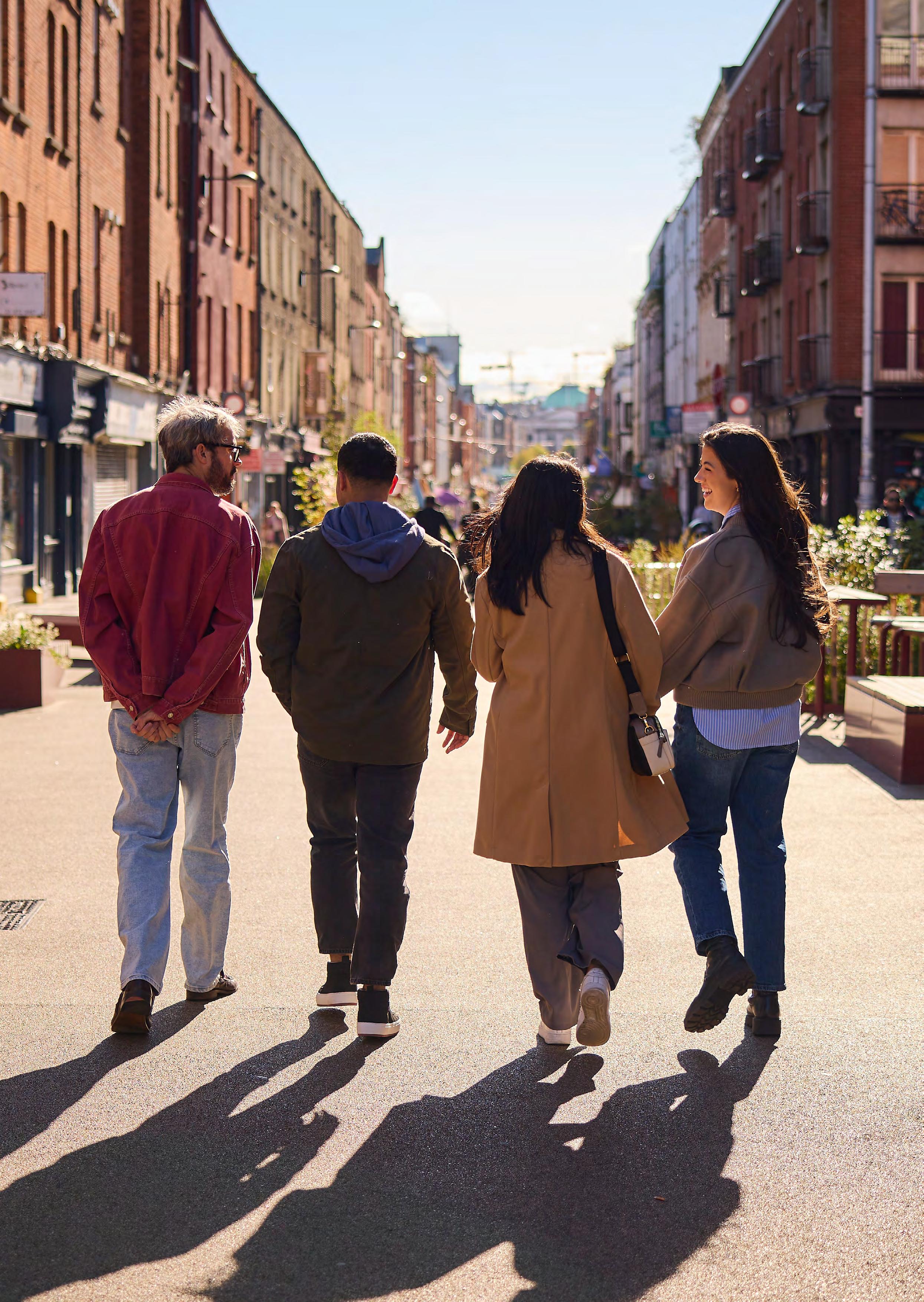
Since the friendliness of Dubliners makes a key point of attractiveness for the city, we should maximise the opportunity for Dubliners to become involved in delivering an authentic visitor experience, in a responsible and mutually beneficial way. Across Europe, cities are leveraging storytelling to engage visitors and create emotional connections between them and local communities. Dublin is uniquely positioned to support its existing reputation among international audiences to drive longer stays and greater visitor satisfaction. It is important not to overlook the power of the local market, for example residents of the Dublin city region who are proud of their city and keen to share their stories and to explore their surroundings throughout the year.
Encouraging Dubliners to explore their own city year-round to spread the economic benefits of tourism, create a local buzz in more neighbourhoods, nurture Dubliners’ pride in the city and help them to become the city’s best ambassadors. This is a dynamic that we want visitors from further afield to benefit from too.
Dublin is a city of stories; identifying and implementing a means to enable Dubliners to tell their own stories will present an appealing narrative to the world that represents Dubliners of all backgrounds. Key elements of this project could include collaborating with local organisations, neighbourhood groups, socio-cultural communities to uncover their unique stories that reflect Dublin’s multiculturalism and heritage. These stories should be made visible and promoted via digital and physical platforms such as key visitor-facing websites, mobile apps, at heritage sites, in walking tours, in accommodation facilities, etc. To reflect Dublin’s diversity, voices from underrepresented communities should be celebrated.
Successful outcomes under the VICE Framework would include:
Visitor (Demand) Putting locals at the heart of the authentic visitor experience in the city; Visitors gain richer, more authentic experience through community-based storytelling; Deeper connections with Dublin’s diverse communities foster better cultural appreciation;
Industry (Supply)
Increased opportunities for tourism business to collaborate with communities to develop new contemporary storytelling for their offerings; greater engagement with the communities can boost innovative product development.
Community Locals have a mechanism through which to share their stories and their city in an engaging and inherently Dublin way; residents feel empowered and valued with their stories being celebrated in Dublin’s city narratives and shared with a global audience.
Environment Promote and develop new community stories and experiences that help preserve the natural and built environment.
This DEDP is a 5 -year plan, and during this time local communities have an important role to play in ensuring that its vision and objectives are delivered on in a way that aligns with their vision for the city. Robust representation by local communities in delivering this DEDP is paramount to its successful implementation.
◊ Establishing representative mechanisms: such as partnering with Dublin City Council to create advisory groups or forums where community voices are consistently represented, helping tourism decision-making process to be held accountable.
◊ Community capacity building: such as providing training and resources to help communities actively participate in the implementation of the Dublin City DEDP.
◊ Community feedback channels: such as hosting workshops, surveys and public consultations to ensure ongoing dialogues with local residents on tourism projects and their impact.
Successful outcomes under the VICE Framework would include:
Visitor (Demand) The actions within this DEDP successfully contribute to a better visitor experience;
Industry (Supply)
Communities are engaged in the delivery of the DEDP; Tourism businesses gain stronger community partnerships that align with local priorities; More opportunities for community-led initiatives to diversify Dublin’s tourism offer.
Community Increased trust from the communities; The DEDP has a net positive impact on tourism attitudes among residents.
Environment Local insights help protect natural and cultural assets;
Monitoring sentiment helps to shape decision-making around the future of tourism in the city, and to be proactive in addressing residents’ concerns, which will result in a better city to live in and to visit. We will work with Dublin City Council and other partners to audit all the available sources of resident sentiment data.
Successful outcomes under the VICE Framework would include:
Visitor (Demand)
Industry (Supply)
Incorporating local sentiments and knowledge into tourism planning will enhance visitor experience, with visitors benefiting from a more welcoming atmosphere; Strengthened connection between visitors and Dubliners through authentic experiences.
Research-backed insights on resident sentiment will inform balanced and sustainable tourism strategies and decisions; Tourism businesses can better align their offerings with community values and needs; Increased collaboration between tourism businesses and local communities will enhance tourism products.
Community More structured and open opportunities for residents to share their views in tourism; Residents feel heard and valued in tourism development, increasing sense of belonging in their city; Reduced tourism-related friction through proactive response to concerns.
Environment Residents' sentiment on the perceived and potential environmental impact of tourism will be gathered and integrated in tourism planning;
5.1 Celebrate the wealth and diversity of the city's stories and storytellers
5.1.1 Promote city discovery by uncovering the stories of the city’s communities and enabling Dubliners to tell their own stories, representing Dubliners of all backgrounds.
5.2 Instil ownership through continuous and pro-active local engagement
5.2.1 Partner on a community engagement and implementation strategy for the Dublin city DEDP to ensure representation by local communities in delivering on the plan's vision and objectives.
5.3 Ensure the DEDP remains rooted and delivers for Dublin
5.3.1 Align research on the participation in and satisfaction with tourism in the city among locals, including measuring the value of local visitation for tourism businesses and the value tourism brings to local communities.
5.3 Address Dubliners as a target market to drive footfall and spend throughout the city.
5.4 Targeted local festival activation to support local community festivals.
5.5 Extend Dublin Champions to include specific programmes for key community groups such as Gardaí, local authority, and Business Improvement District (BID) community officers.
5.6 Create a community panel as an opportunity to embed the views of residents in tourism plans and development opportunities.
5.7 Create a single dashboard tracking core community sentiment on key metrics to be used by all stakeholders throughout the city.
DT, DPC, NTA, WI
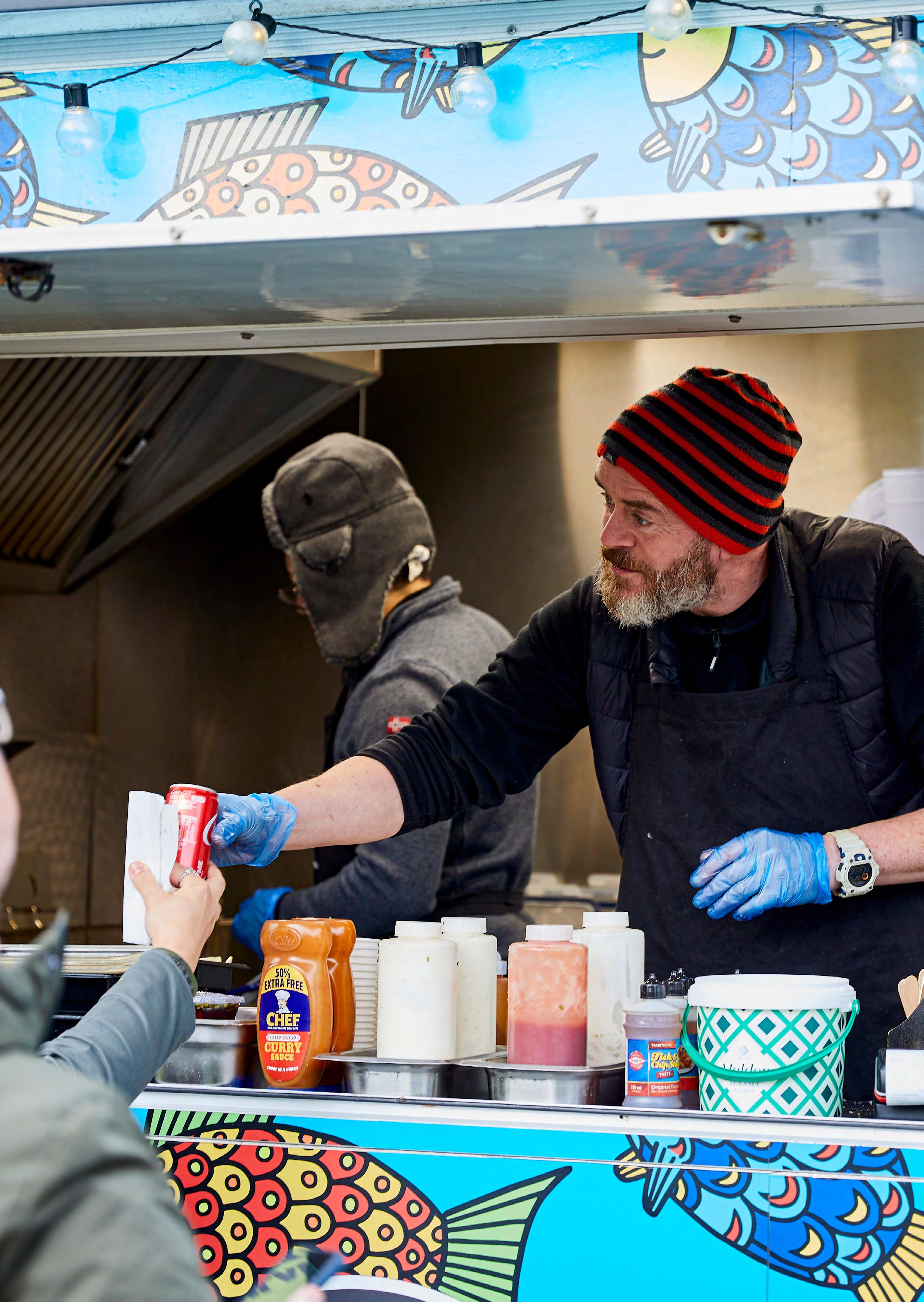
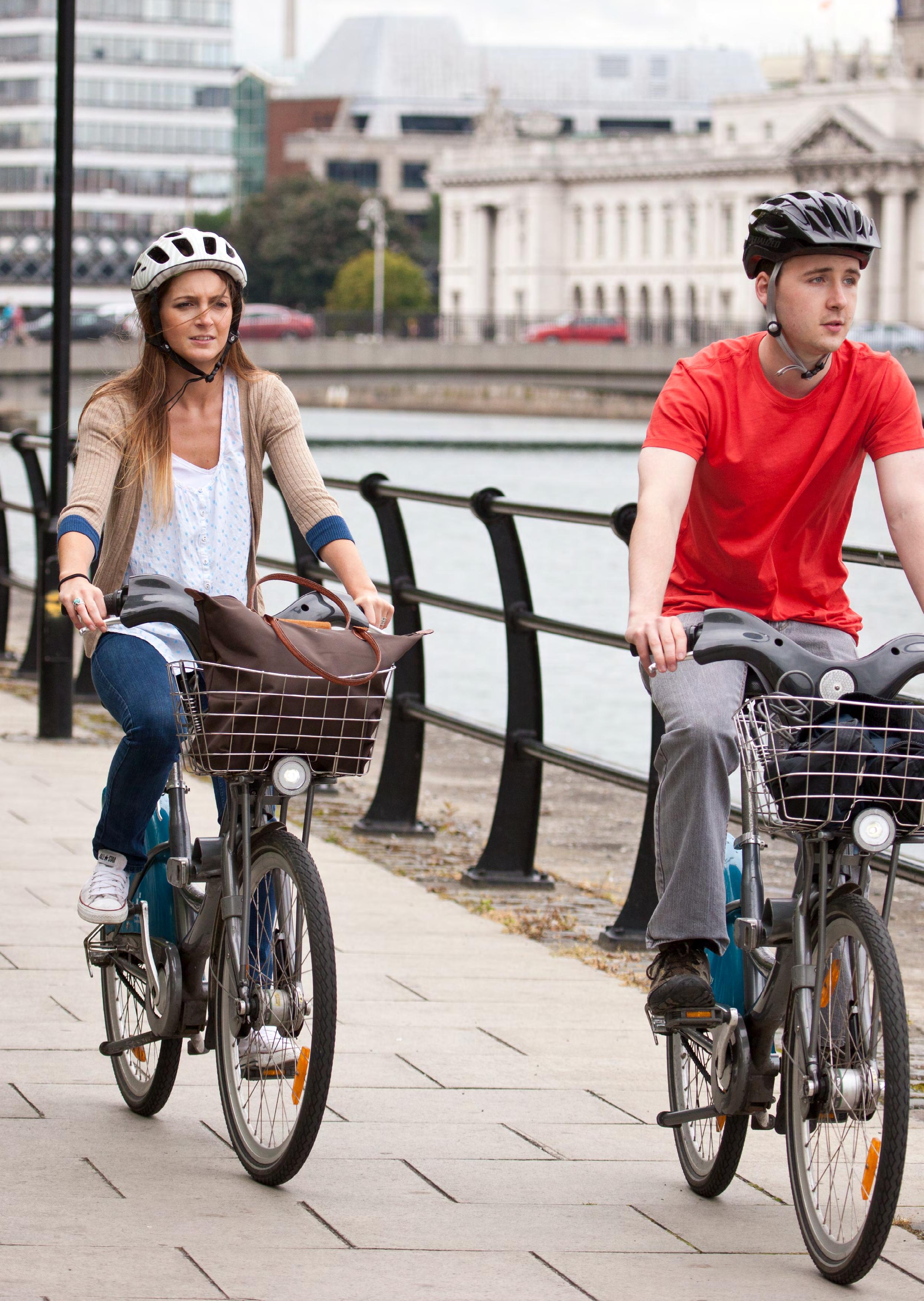
Increasing numbers of cities are recognising tourism businesses that incorporate sustainable practices into their operations and providing incentives to other businesses to follow suit, as well as developing tools to help visitors take more responsible choices. Furthermore, increasing numbers of travel trade businesses are seeking to ensure that their suppliers perform well in terms of their environmental and social impact too.
As a key pillar of Dublin’s economy, and the city’s commitment as an EU Mission City, it is essential that tourism plays its part in making Dublin a more sustainable place to live, work, invest in and visit. Making public transport options more accessible and flexible through a transport strategy for visitors, in tandem with improvements to orientation and wayfinding included in Strategic Objective 4, will support increased intra-destination sustainability. We will work to shape this strategy with a focus on active travel, including an enhanced cycling and walking network, to promote sustainable and environmentally friendly modes of transportation and enhance the overall visitor experience. For the tourism industry, Fáilte Ireland’s Climate Action Plan sets out a clear path for action. Developed in consultation with the tourism industry to help businesses navigate every step of the climate action, the programme includes:
• Initial evaluation and benchmarking
• Identification of development areas
• Target prioritisation to deliver greatest impact
• Capability audit of team to address development needs
• Review access to available funding
• Ongoing review, monitoring, and refinement
We will collaborate with Dublin City Council and other partners on a transport strategy for visitors with a focus on active travel, including an enhanced cycling and walking network, to promote sustainable and environmentally friendly modes of transportation and enhance the overall visitor experience by providing convenient and scenic routes for exploring the city.
Successful outcomes under the VICE Framework would include:
Visitor (Demand)
Industry (Supply)
Enhanced visitor experience through convenient and scenic active travel routes; Deeper connections with the city’s cultural and natural beauty through active travel.
Tourism businesses benefit from increased integration with active travel networks; Increased opportunities for connections between tours, bike rentals, walking experiences, diversifying the offer; Improved service delivery with more collaboration opportunities between transport operators and attractions.
Community Visitor flow through neighbourhoods increasingly takes place through active travel, reducing negative impacts; Improved quality of life for residents and visitors.
Environment
Intra-destination carbon emissions are reduced through a greater use of active travel; Reduced strain on infrastructure; Encourage a focus on sustainability and eco-conscious choices from visitors and businesses.
Translating the national Climate Action Programme to delivery at a destination level will support a more sustainable city by ensuring that tourism in Dublin is developed and managed in a responsible way. Dublin will lead the way in delivery of Fáilte Ireland’s Climate Action Programme by maximising the number of hotels and visitor attractions across the destination to complete their Climate Action programmes.
Successful outcomes under the VICE Framework would include:
Visitor (Demand)
Industry (Supply)
Clear communication of sustainable initiatives encourages visitors to make responsible choices; Visitors are more likely to be inspired by Dublin’s leadership and commitment in sustainability; Visitors will be able to make choices informed by a robust information provision about environmental measures implemented by tourism businesses.
Tourism businesses such as hotels and attractions will be more informed and can better integrate climate actions in their operations; Industry will be supported to reduce their environmental impact, offering an enhanced reputation and marketing benefits;
Community Local communities benefit from tourism business adopting greener practices that reduce environmental pressures; Enhanced community pride as Dublin becomes a role model for sustainable tourism;
Environment A net reduction in the contribution of tourism activity to carbon emissions in Ireland; Encourage ongoing accountability and commitment to environmental stewardship.
6.1.1 Cooperate on a transport strategy for visitors with a focus on active travel, including an enhanced cycling and walking network, to promote sustainable and environmentally friendly modes of transportation and enhance the overall visitor experience by providing convenient and scenic routes for exploring the city.
6.2.1 Recruit hotels and visitor attractions across the Dublin Region to engage in Fáilte Ireland’s Climate Action Programme.
6.2.2 Provide advice to Dublin city tourism businesses on financial supports available to reduce carbon emissions, increase energy efficiency and adopt renewable technologies.
Supporting initiatives
6.3 Drive sustainability cluster development and associated education supports.
6.4 Coordination of citywide ‘Mission City’ actions aligned to the EU’s climateneutral and smart cities programme by 2030.
6.5 Through the city Traffic Management Plan work to put a long-term coach parking solution in place.
6.6 Using national and international benchmarks, agree a city-wide consistent approach to specific metrics, including destination-wide sustainability indicators and a shared approach to measurement of community sentiment and feedback.
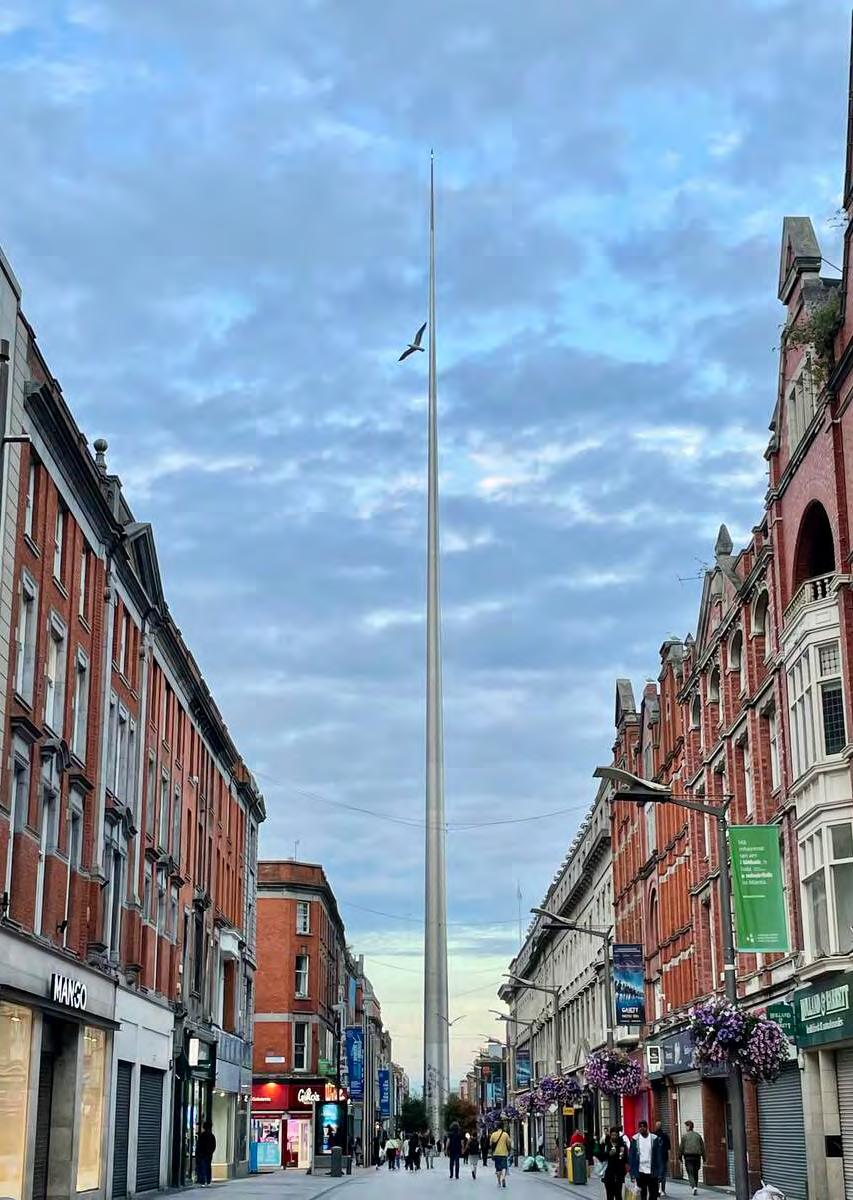
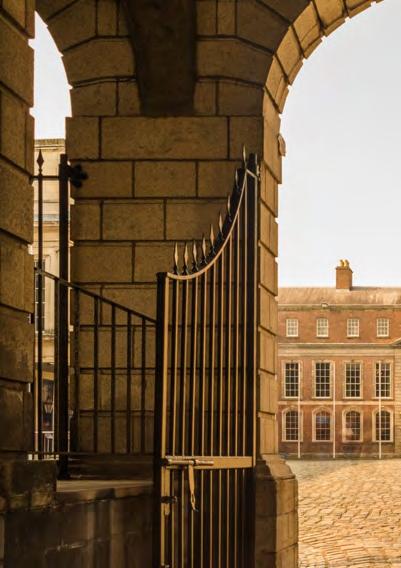
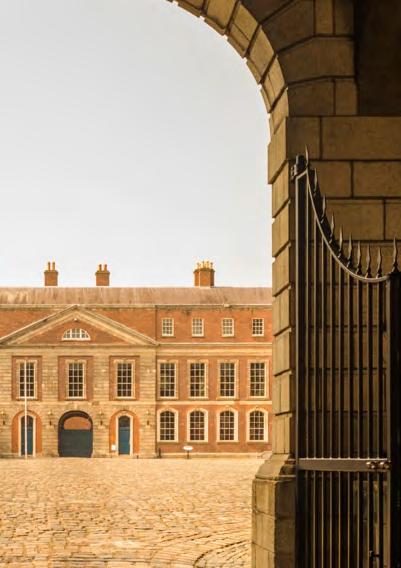
Fáilte Ireland, in partnership with EarthCheck, has developed a set of regional sustainable indicators as a framework to provide a balanced scorecard on regional tourism performance. The goal is for these indicators to be used across Ireland’s four regional brands i.e. Wild Atlantic Way, Ireland’s Ancient East, Ireland’s Hidden Heartlands, & Dublin.
Overall, these indicators will link into emerging strategies within these regions and facilitate improved performance monitoring over time.
The indicators provide a basket of ‘health’ indicators across five key areas:
1
2 3 4 5
The indicators are drawn from a range of data across existing Central Statistics Office (CSO) and Fáilte Ireland surveys, in addition to a range of external and new data sources.
The purpose and intent behind the regional sustainable tourism indicators is to provide a replicable dashboard of measures at regional level which are representative of the broad sustainability performance of the tourism industry year-on-year.
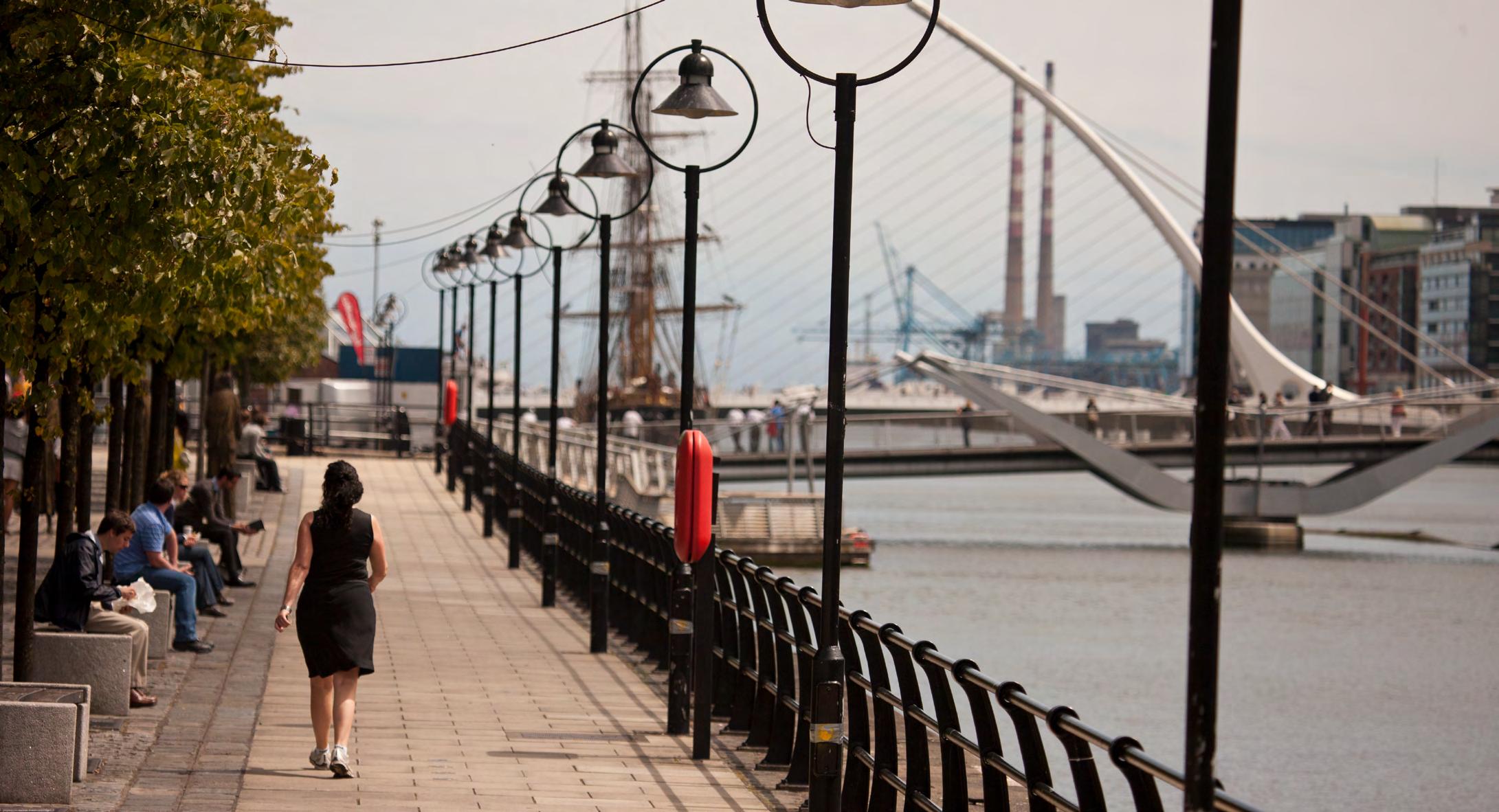
The indicators were developed to provide information on Irish tourism’s sustainability performance through plausible and meaningful measurement parameters. The indicators need to address what can be measured immediately with readily available information, and those indicators that may require the development and use of new or additional data sources and measurement techniques. Indicators need to be easy to communicate and respond to the needs and concerns of different stakeholder groups.
We required a standardised means of assessing regional tourism performance based on sustainability metrics to facilitate a more cohesive and holistic understanding of cross cutting issues in the four regions outlined. The project sought metrics that help to incorporate sustainability into destination management and investment planning which can help futureproof and inform better decision-making. As issues arise, they can be meaningfully tackled in a consistent and coherent manner with a clear framework in place.
It has started with an initial list of 28 indicators, but it is planned to expand this over time to a larger set of indicators. Data for 2023 and 2024 has been compiled and is being refined as of May 2025 with a view to publishing the results later in 2025. These indicators will become the means by which we track and measure the success of our plans.
For the Dublin City DEDP, in addition to using these indicators to track our overall performance, we will focus on five specific KPIs to measure the success of this plan, as follows:
▶ Increase domestic spend as a percentage of total spend from 20% (Survey of Overseas Travellers 2023) to 25% of overall tourism revenue.
▶ In line with our ambition to further the community appeal and social sustainability of tourism, we will maintain a score of 78%+ of respondents who feel adequate measures are taken to address the negative impacts of tourism, as measured by the Tourism Approval Rating.
▶ Fáilte Ireland will engage with and support 300 businesses across a range of destination, experience and capability development measures during the lifetime of this plan.
▶ In line with our sustainability goals, we will increase the total number of city centre based businesses participating in the Fáilte Ireland Climate Action Programme to 90.
▶ In line with our goal to support high-quality visitor experience, we will improve the overall visitor satisfaction rating as measured by the Destination Attitudes Survey from 84% to 88%.
Furthermore, as sustainability (environmental, social and economic) becomes increasingly important, both to consumers and in B2B relationships, Dublin’s experiences and attractions will increasingly need to demonstrate their commitment to meeting environmental standards, and in delivering a positive social and economic impact on surrounding local communities. Additionally, the impact of the plan will be measured by the KPIs set out in the Regional Tourism Development strategy for Dublin, as follows:
The city will rank within the top 3 of its competitor set internationally, supported by a differentiated winter offering.
Visitors will navigate the city easily, with best-inclass wayfinding and digital content.
An increase in visitor satisfaction ratings of people who visit Dublin city.
Visitors find ease of accessing high-quality information about what there is to see and do in the city prior to visiting.
Dublin will be an attractive destination for domestic visitors, and day trippers will contribute significantly to overall domestic spend.
International visitors will stay longer and spend more.
International benchmarking, STR data (Occupancy, ADR, RevPAR)
Fáilte Ireland’s Destination Attitudes Survey
Fáilte Ireland’s DAS
Fáilte Ireland’s Behaviour and Brand Tracker (BBT) / Survey of Overseas Travellers (SOT)
Fáilte Ireland’s BBT; CSO data
Fáilte Ireland’s (SOT)
Optimum business mix will be achieved across the industry, as new segments (families/ outdoors) continue to grow. Industry networks surveys
We will offer best-in-class experiences, fully optimised digital capability, world class storytelling and multi-lingual tour guides (in large/iconic attractions).
We will speak with one voice to sell and market “Destination Dublin,” with the brand proposition fully adopted, embraced, and activated.
Fáilte Ireland Digital that Delivers metrics; Industry network surveys.
Industry networks surveys; industry adoption of brand assets; DEDP KPIs
Communities maintain and/or improve their Tourism Approval Rating.
Year-on-year increase in employment in the sector.
Character mapping will be complete, differentiating neighbourhoods, with full engagement of local communities, who are at the heart of the authentic experience.
Visitors will experience the real Dublin with communities sharing the city in an engaging and authentic way.
The Dublin City DEDP demonstrates full compliance with all relevant requirements arising from EU and Irish planning and environmental legislation.
Tourism businesses are on track to meet their carbon reduction targets as per the Carbon Budget and in line with the Climate Action Plan 2021.
The outdoors will be fully optimised in a sustainable way, from place-making and animation of public realm in urban areas to maximising the opportunities for visitors to explore and experience the great outdoors, including walking and cycleways, at the coast and mountains.
Tourism activities are not contributing to environmental damage, but are contributing to net gain of habitats and species.
Year-on-year increase in the uptake by industry of sustainability/ environmental certification.
Fáilte Ireland’s Community Survey
Fáilte Ireland data and/or CSO data
Bespoke research to be developed as part of this DEDP.
Fáilte Ireland’s Destination Attitudes Survey
Strategic Environmental Assessment, Appropriate Assessment & Fáilte Ireland’s National Environmental Monitoring Programme 2021 - 2026
Screening for Strategic Environmental Assessment and Appropriate Assessment.
• Consumer Sustainability Tracker (CST) which will track sustainability perceptions and engagement.
• ORIS Scheme.
• Greenway Interpretation Scheme
Fáilte Ireland’s National Environmental Monitoring Programme 2021 - 2026
Certification schemes

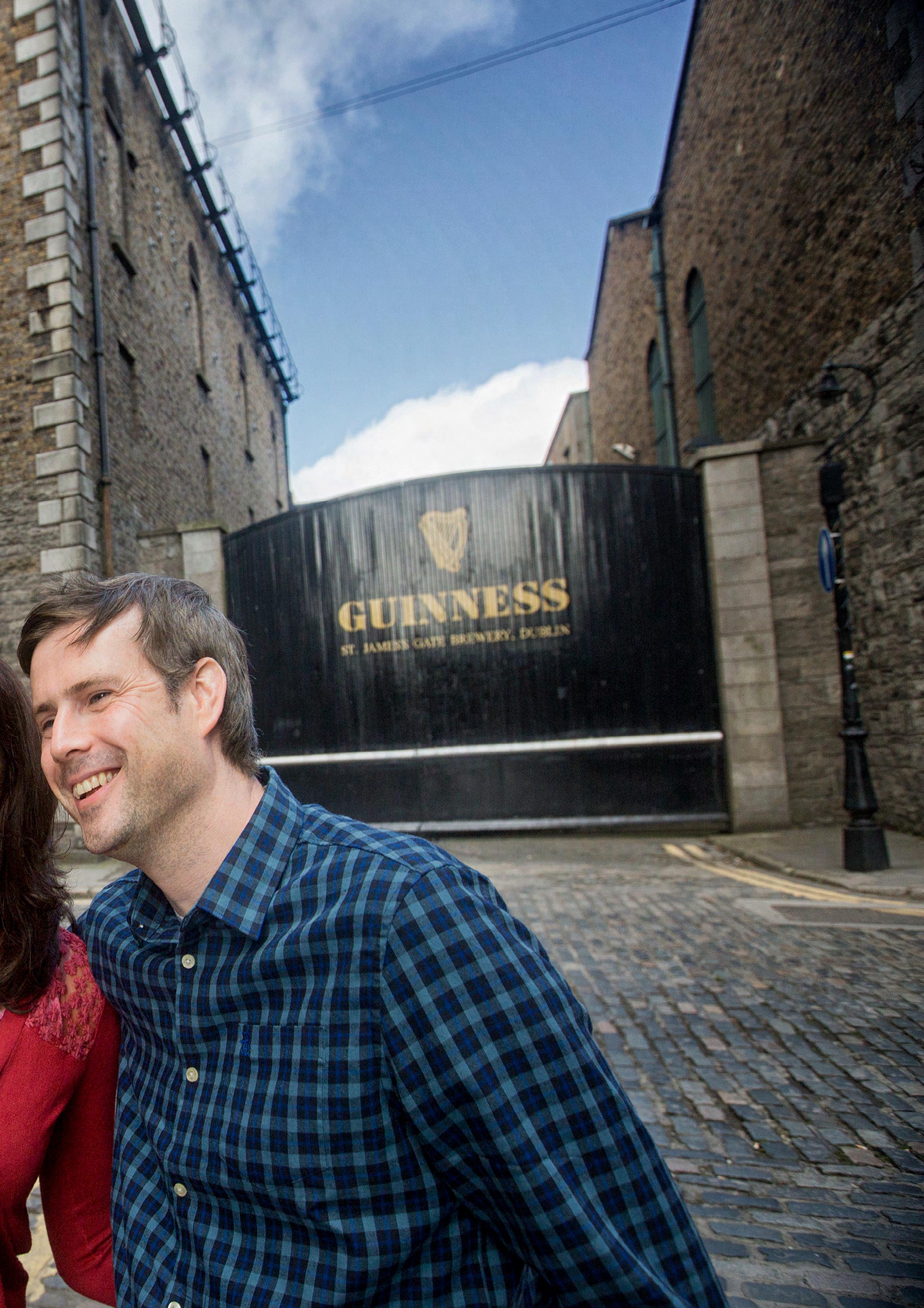
1.1.1 CHQ Food Market: Develop, launch, and promote the CHQ Food Market and further events as required to drive visitors to the area.
1.1.2 Iveagh Market: Seek to stabilise, progressively restore and develop the Iveagh markets as a functioning market.
1.1.3 Fruit and Vegetable Market: Conserve and activate the Fruit and Vegetable market.
1.1.4 Identify opportunities to support entities managing key city centre markets, for example business planning, concept development, and behind-the-scenes saleable experience development.
1.2.1 Complete an audit of the existing festival programme in the city to identify opportunities to programme new festivals and events to targeted markets, at targeted times of year.
1.2.2 Expand upon the existing programme of shoulder-season and winter festivals and events including the New Year’s Festival and TradFest by exploring the feasibility of a new festival for Q1.
1.2.3 Seek to extend the visitor season through support for new events in February and October.
1.2.4 Explore the opportunity to establish Dublin’s cultural credentials as an asset, including a review of music as a potential differentiator for tourism.
1.2.5 Support the creation of a city-wide festivals & events forum thereby facilitating the identification of gaps and opportunities throughout the year, and also the opportunity for co-promotion of key events to drive footfall into the city.
1.2.6 Maintain a large events calendar to give a macro view of event activity so that large-scale events are not contributing to capacity pinch points at key times during the year.
1.3 Encourage exploration of Dublin neighbourhoods
1.3.1 Collaborate on a Dublin neighbourhoods development strategy that draws on international best practice.
1.3.2 Identify a range of compelling neighbourhood hubs (for example key museums and attractions which will provide a draw, supported by a sufficient offer of shops, F&B, and appealing outdoor spaces such as parks).
1.3.3 Engage with attractions, small businesses, residents’ groups to evaluate and assess how to develop a greater tourism appeal based on the neighbourhood’s unique identity.
DCC, NTA Ongoing
1.3.4 Develop a neighbourhoods marketing strategy to ensure accurate positioning that reflects residents own ambitions and community identity.
1.3.5 Provide supporting infrastructure to aid visitor exploration (wayfinding, local visitor information guides).
1.3.6 Identify any potential gaps in the type/ number of experiences in the neighbourhood strategy and what supports are required to address these
1.4.1 Continue to implement programme to increase the breadth of the night-time offering.
1.4.2 Audit early morning and late-night tour and activity offer with key attractions and identify opportunities for expanding opening hours and explore late night opening options (including special events) with NCIs.
1.4.3 Work together to support the growth of night-time economy initiatives, including night markets, which bolster cultural dynamism, foster economic growth, and enhance safety and security in the city.
1.5 Coordinate the delivery of key recommendations outlined in the 2024 Dublin Food Tourism Audit.
1.6 Work with event organisers to explore how a visitor component could be integrated into event programming (e.g., before or after shows, or behind the scenes).
1.7 Develop a cultural proposition for tourism that taps into what is uniquely Dublin, while also being informed by international best practice, and to produce an action plan that optimises this unique cultural proposition and leverages Dublin’s cultural assets.
2.1 Support existing and new visitor experiences looking to either expand or create visitor experiences.
2.1.1 Create an ‘advisory support’ package for visitor experiences to include insights into the market and types of experiences of appeal to visitors, and international benchmarking where possible.
2.1.2 Support key visitor attractions which require significant interpretative and capacity enhancements to identify solutions and investment opportunities.
2.1.3 Engage with potential new investors into the market and identify potential funding streams for concept development, feasibility studies and delivery of projects.
2.1.4 Monitor and support experiences which have received public sector investment over the last number of years to ensure they are set up for success, providing data on their performance and meeting their KPI.
2.2 Support increased choice and quality of visitor accommodation
2.2.1 Creation of an overall accommodation inventory for Dublin and a Planning to Construction Pipeline Analysis to help inform development of an agreed set of measures to unlock the required growth in accommodation stock.
2.2.2 Alignment around implementation of the Short-term Tourism Letting Register.
2.3.1 Realise the visitor potential of National Cultural Institution (NCI) sites.
2.3.2 Leverage the existing strategic partnership between Fáilte Ireland to unlock the potential of OPW/ DHLGH tourism sites to ensure they are future proofed, potential constraints are addressed, and the visitor experience is world class.
2.3.3 Identify a shortlist of sites for future development under phase 2 of the strategic partnership.
2.4 Reimagine the potential of the Dubline as a standalone visitor experience
2.4.1 Complete an audit of the existing Dubline with a view to creating a reimagined trail across the city that enables visitors to unlock the stories of Dublin.
2.4.2 Undertake works to update the Dubline, ensuring the visitor gets an immersive, seamless experience through a fully integrated offering.
2.5 Support the National Cultural Institutions to further develop their tourism potential and position the importance of culture in the tourism offering for Dublin. FI NCIs ST-MT
2.7 Provide a range of business supports to existing visitor experiences in areas such as commerciality, climate action, employer excellence, accessibility and inclusion, and digital capability.
3.1 Identify and enhance key visitor pathways between key attractions
3.1.1 Identify 3-4 high footfall areas to create visitor pathways and develop a supporting plan to deliver key improvements.
3.1.2 Identify ways to improve their appearance and safety, to enhance visitor experience of Dublin.
3.1.3 Provide enhanced lighting along each identified visitor pathway
3.2 Enhance water animation
3.2.1 Identify appropriate use for George’s Dock.
3.2.2 Develop Docklands Water Sports Centre with scope for experience/ enterprise development
3.2.3 Undertake a water animation strategy to optimise the water as a natural asset.
3.3 Greenway integration - Existing and planned cycleways and greenways play well into the Dublin Coastal Trail offering with routes connecting a number of Dublin Coastal Trail locations
3.4 Enhance, animate and activate our outdoor spaces to facilitate a range of outdoor events.
3.5 Undertake enhancement of the South and North Campshires of the River Liffey.
3.6 Support the development and promotion of Abhainn (River) Trail on Dublin Discovery Trails App.
3.7 Promote and enhance visitor experiences along Dublin’s Waterline heritage trail.
3.8 Maximise place activation of Bolands Mills development as key social space in Docklands.
3.9 Develop a plan for use of City Block 19, including recreational amenities for access to water.
3.10 Complete replacement of sea lock gates, enabling access for tall ships into Grand Canal Dock.
4.1 Ensure visitors can explore Dublin with ease
4.1.1 Develop concept for transport hubs & roll out enhancements at 5 high footfall locations.
4.1.2 Roll out of Next Generation Ticketing to transform and modernise the system for ticketing and payments on Irish public transport.
4.1.3 Improve information provision for visitors to enable visitors to access information seamlessly, and in a coherent way, from signage to interactive statues, multi-format maps and digital trails.
4.1.4 Fully leverage VisitDublin.com as well as FI Tourist Information Centres in supporting improved navigation and exploration for visitors around the city.
4.2 Use data to optimise visitor flows
4.2 Implement pilot visitor data flow project to support the centralised collation of visitor footfall and spend data that can be shared across the region.
4.2.1 Identify data sources to analyse visitor flow: audit existing footfall counters across the city; review third party data sources and explore the possibility of accessing this data.
4.2.2 Support visitor journey mapping for the National Cultural Institutions and review of best practice/international benchmarking.
4.2.3 Explore potential sources of real-time visitor attraction data and identify ways of using this data.
4.3 Ensure Dublin experiences are accessible and inclusive for all
4.3.1 Ensure that Dublin’s visitor economy businesses are encouraged to make use of full range of business support resources available from FI, DCC and other relevant bodies, and supported to implement their recommendations wherever possible.
4.3.2 Support Dublin’s vision to be the first autism-friendly capital city in the world, by encouraging visitor-facing businesses to become an ‘Autism-Friendly Champion’.
4.3.3 Ensure that access & inclusion is incorporated into festivals and events and that visitors with additional mobility and sensory needs are aware of the options available to them.
4.4 Improve wayfinding and animation at key gateways and hubs.
DCC, FI, NTA MT
4.5 Increase visibility and distribution of visitor leap cards. NTA FI ST
4.6 Engage with the Dublin City Smart Tourism team to support a range of ‘smart’ projects, including future connectivity and mobility projects, environmental initiatives, policy development, and citizen engagement activities.
4.7 Coordinate at regional level to review existing mapping with a view to developing a single Dublin map, agnostic of location.
FI
DCC, FI, SDCC CoCo, DLR, Fingal CoCo
Ongoing
5.1 Celebrate the wealth and diversity of the city's stories and storytellers
5.1.1 Promote city discovery by uncovering the stories of the city’s communities and enabling Dubliners to tell their own stories, representing Dubliners of all backgrounds.
5.2 Instil ownership through continuous and pro-active local engagement
5.2.1 Partner on a community engagement and implementation strategy for the Dublin City DEDP to ensure representation by local communities in delivering on the plan's vision and objectives.
5.3 Ensure DEDP remains rooted and delivers for Dublin
5.3.1 Align research on the participation in and satisfaction with tourism in the city among locals, including measuring the value of local visitation for tourism businesses and the value tourism brings to local communities.
5.3 Address Dubliners as a target market to drive footfall and spend throughout the city.
5.4 Targeted local festival activation to support local community festivals.
5.5 Extend Dublin Champions to include specific programmes for key community groups such as Gardaí, local authority, and Business Improvement District (BID) community officers.
5.6 Create a community panel as an opportunity to embed the views of residents in tourism plans and development opportunities.
5.7 Create a single dashboard tracking core community sentiment on key metrics to be used by all stakeholders throughout the city.
DT, DPC, NTA, WI
6.1 Prioritise active travel for visitors
6.1.1 Cooperate on a transport strategy for visitors with a focus on active travel, including an enhanced cycling and walking network, to promote sustainable and environmentally friendly modes of transportation and enhance the overall visitor experience by providing convenient and scenic routes for exploring the city.
6.2.1 Recruit hotels and visitor attractions across the Dublin Region to engage in Fáilte Ireland’s Climate Action Programme.
6.2.2 Provide advice to Dublin city tourism businesses on financial supports available to reduce carbon emissions, increase energy efficiency and adopt renewable technologies.
Supporting initiatives
6.3 Drive sustainability cluster development and associated education supports.
6.4 Coordination of citywide ‘Mission City’ actions aligned to the EU’s climateneutral and smart cities programme by 2030.
6.5 Through the city Traffic Management Plan work to put a long-term coach parking solution in place.
6.6 Using national and international benchmarks, agree a city-wide consistent approach to specific metrics, including destination-wide sustainability indicators and a shared approach to measurement of community sentiment and feedback.
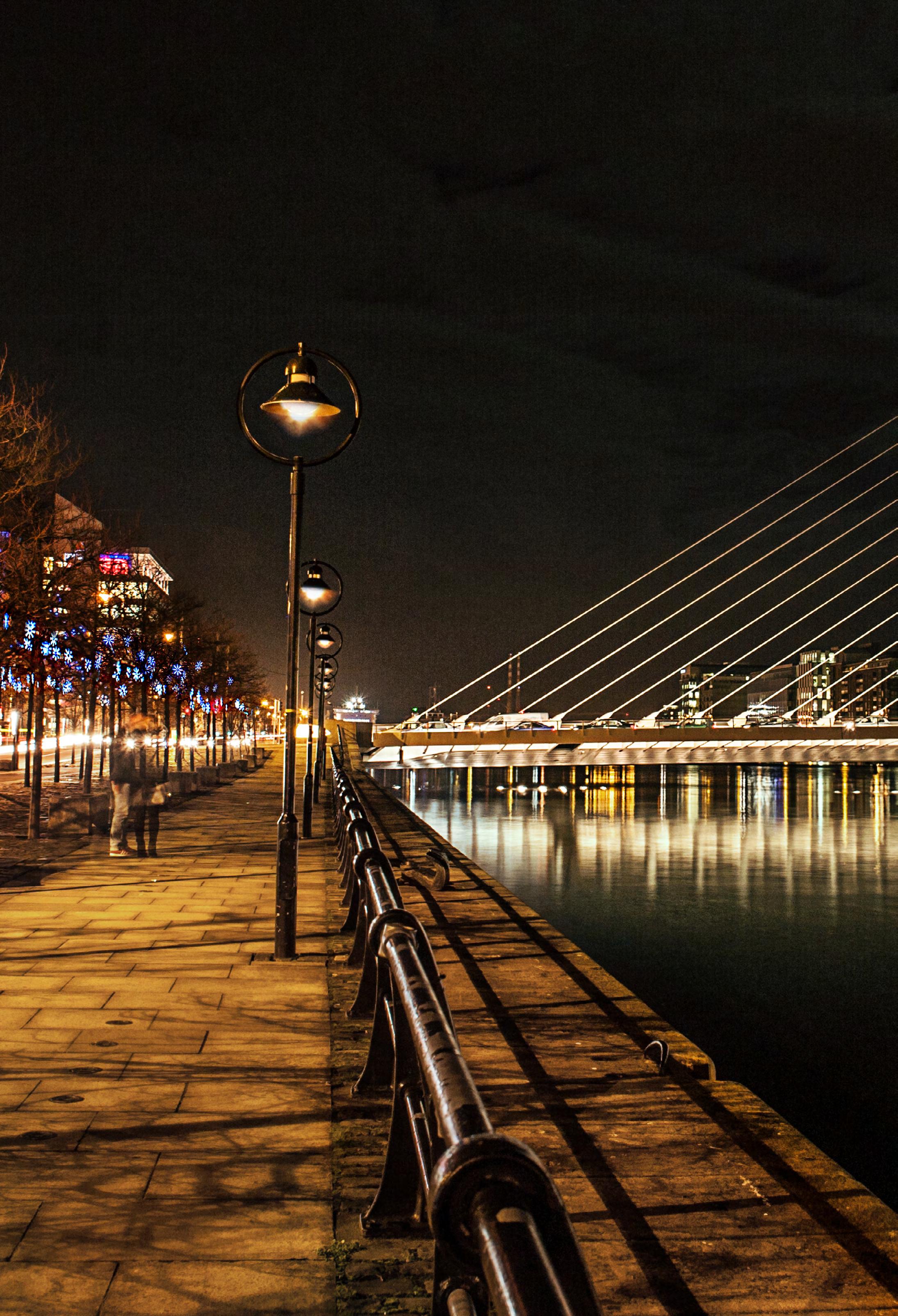
This plan provides an opportunity to ensure that all existing and future tourism projects and initiatives for the Dublin City Destination and Experience Development plan are planned, developed and managed in a sustainable and integrated manner. The VICE (Visitor, Industry, Community and Environment) Model for SustainableTourism is the approach the Dublin DEDP is developed from and strives to implement.
Fáilte Ireland recognises the need to integrate environmental considerations into this plan in a way that responds to the sensitivities and requirements of the wider natural environment. Environmental consideration in this instance includes water quality and amenity, climate change, traffic, biodiversity, built and cultural heritage, landscape and communities. These all play a vital part in our tourism sector.
The protection, enhancement and promotion of our most important tourism asset - the natural environment has been an integral part of the formation of this Plan as is evidenced in the following:
• Environmental screening of the plan,
• A firm commitment to ensuring sustainable and responsible tourism principles are practiced,
• Compliance with statutory decision making and consent granting at plan implementation stage, and
• Integrating requirements for environmental protection and management.
Consideration has been given to the requirement to undertake environmental assessment of this plan in order to ensure full legal compliance and to further integrate protection, enhancement and promotion of the environment in developing and implementing the plan. The following sets out the two types of environmental assessments that were considered.
This plan has been examined for the need to undertake Strategic Environmental Assessment (SEA). SEA requirements apply to the plans and programmes of public authorities that, inter alia, set the framework for future development consent of projects listed in Annexes I and II to European Directive 85/337/EEC. The Plan does not create such a framework, therefore requirements in relation to SEA do not apply.
An AA Screening determination, informed by an AA Screening Report, has been made by Fáilte Ireland regarding this plan. It has been determined that further AA is not required as no effects on the integrity of European sites will result from the implementation of the plan, either on its own or in combination with other plans, programmes or projects.
This plan conforms and commits to sustainable growth of tourism in Dublin City and, in completing the above-mentioned screenings, demonstrates the strong commitment to the VICE Model for Sustainable Tourism Development.
The implementation of guiding principles is key to the success of the plan. Sustainable tourism development guidelines and management practices are applicable to all forms of tourism in all types of destinations, including mass tourism and the various niche tourism segments.
Sustainability principles refer to the environmental, economic, and socio-cultural aspects of tourism development, and a suitable balance must be established between these three dimensions to guarantee its long-term sustainability. Thus, sustainable tourism should:
1. Make optimal use of environmental resources that constitute a key element in tourism development, maintaining essential ecological processes and helping to conserve natural heritage and biodiversity.
2. Respect the socio-cultural authenticity of host communities, conserve their built and living cultural heritage and traditional values, and contribute to intercultural understanding and tolerance.
3. Ensure viable, long-term economic operations, providing socio-economic benefits to all stakeholders that are fairly distributed, including stable employment and income-earning opportunities and social services to host communities, and contributing to poverty alleviation (UNWTO.org).
Sustainable tourism development requires the informed participation of all relevant stakeholders, as well as strong political leadership to ensure wide participation and consensus building. Achieving sustainable tourism is a continuous process and it requires constant monitoring of impacts, introducing the necessary preventive and/or corrective measures whenever necessary. Sustainable tourism is also required to maintain a high level of tourist satisfaction and ensure a meaningful experience to the tourists, raising their awareness about sustainability issues and promoting sustainable tourism practices amongst them.
Promoters/ businesses shall adopt a responsible and sustainable tourism approach resulting from this plan, through the implementation of best practice and/ or tourism guidelines. Key relevant Fáilte Ireland guidance includes:
• Climate Action Programme
• Development Guidelines for Tourism Destination Towns,
• Visitor Management Guidelines,
• Tourist Accommodation Quality Assured – code of ethics,
• Sustainable Festival Guidelines 2023, developed by Fáilte Ireland; and
• And other guidance and any subsequent updates.
This plan is situated alongside a hierarchy of statutory documents setting out public policy for land use development, tourism, infrastructure, sustainable development, environmental protection and environmental management. These include the National Planning Framework (NPF), Regional Spatial and Economic Strategies (RSESs) and lower tier Development plans and Local Area Plans.
Implementation of this plan shall be consistent with and conform with the above and will involve Fáilte Ireland helping to facilitate, promote, support and coordinate stakeholders (including local authorities, other government agencies, tourism operators, communities and visitors) in their activities in a way that is consistent with this consent-granting framework.
In order to be realised, projects included in this plan will have to comply, as relevant, with the various provisions of legislation, policies, plans and programmes (including requirements for lower-tier Appropriate Assessment, Environmental Impact Assessment and other licencing requirements as appropriate) that form the statutory decision-making and consent-granting framework, of which this plan is not part and does not contribute towards.
In order to support the ambition for sustainable destination growth, the Dublin DEDP is designed to guide the destination and its stakeholders through a five year development focus through continuous destination improvement and experience innovation. This DEDP is aligned with a number of existing strategies, policy and industry reports. They include;
• Dublin’s Regional Tourism Development Strategy 2023-2027
• Dublin City Council Tourism Strategy 2023-2028
• Taoiseach’s Task Force report on Dublin City Centre (October 2024)
• Ireland’s Tourism Policy Framework 2025-2030
• Local Economic and Community Development Plan
• Night-time Economy Strategy
The formation of this DEDP has also taken into account a range of other county and city development plans and strategies, as well as national plans relating to areas such as transport, recreation and environmental policy.
2027
The Dublin RTDS looks at the region’s three distinct geographies (City Centre, Coast, and Mountains) in a holistic way. The RTDS provides a strategic framework to guide other, more detailed tourism development plans over a five-year period. These include Destination and Experience Development Plans, as well as the tourism sections of City and County Development Plans and other sources of public funding. The four objectives contained within the Dublin RTDS are to:
1. Increase resilience by optimizing visitor mix and maximizing revenue by increasing dwell time and the range of activities engaged in.
2. Re-ignite business tourism, positioning Dublin as a leader internationally with a focus on sustainability.
3. Develop differentiating experiences, providing domestic and international tourists with reasons to stay longer.
4. Build a committed stakeholder and industry partnership to develop Destination Dublin, encompassing the whole region and leveraging citizen-centric and visitor-centric initiatives for mutual benefit while reducing the industry’s carbon footprint and ensuring net contribution to the protection of our cultural and natural heritage.
Published in June 2023, Dublin City Council’s Tourism Strategy 2023-28 provides more specific detail of three strategic tourism goals for the city:
1. To serve a people-centred and community-based growth agenda
2. To be proactive, accountable and measurable toward the city’s shared climate goals, and;
3. To be innovative, future-facing, creative, collaborative and digitally-advanced
The Tourism Strategy is structured around six strategic tourism pillars: People; Places and Spaces; Culture; Climate Action and Sustainability; Innovation, and; Data and Insights. Each of these is linked to one or more of the UN Sustainable Development Goals and the 2030 Agenda for Sustainable
The Taoiseach’s Task Force report on Dublin City Centre was launched in October 2024, with 10 Big Moves identified to action positive change in the city, signifying their importance to the strategic development and management of Dublin in the future. Several of these Big Moves are particularly relevant to the visitor experience in Dublin and include revitalising the city centre, operating the City Centre Transport Plan with agility and offering Dubliners compelling reasons to visit the city centre. By delivering comprehensively on this DEDP, Fáilte Ireland and its partners will support the implementation of these Big Moves. (NB: Delivery of the Taoiseach’s Task Force report has also been included in the Programme for Government 2025).
The National Tourism Policy Framework was published by the Department of Tourism, Culture, Arts, Gaeltacht, Sport and Media in the final quarter of 2024. It is based on the three pillars of sustainability, — Environmental, Economic and Social Sustainability. It aims to ensure that all three of these pillars receive equal consideration to ensure that Ireland has a thriving tourism sector through to 2030. Overall, the Policy Framework is based on the following guiding principles for tourism:
Protect and enhance Ireland’s cultural heritage, natural assets and environmental quality.
Ensure that tourism contributes to meeting national and international policy commitments on climate change.
Support balanced economic development and employment throughout the country.
Prioritise the economic value per visitor over volume of tourists visiting.
Minimise any negative impacts of tourism on host communities and maximise social benefits of tourism.
Encourage innovation within the tourism sector to ensure improved visitor satisfaction.
Ensure Ireland is recognised as an authentic sustainable destination.


